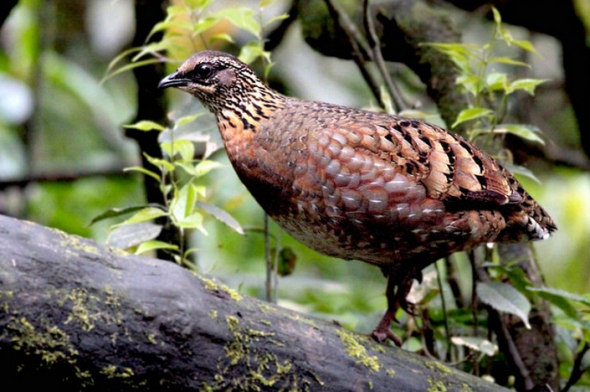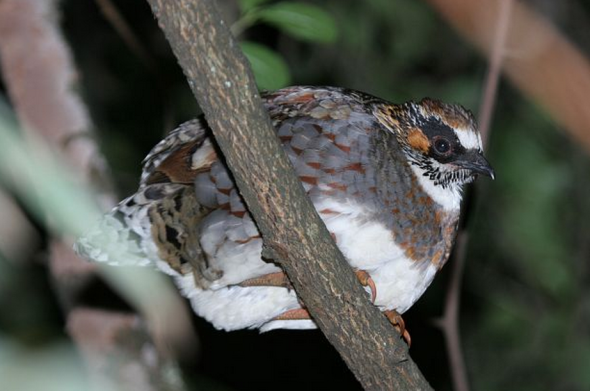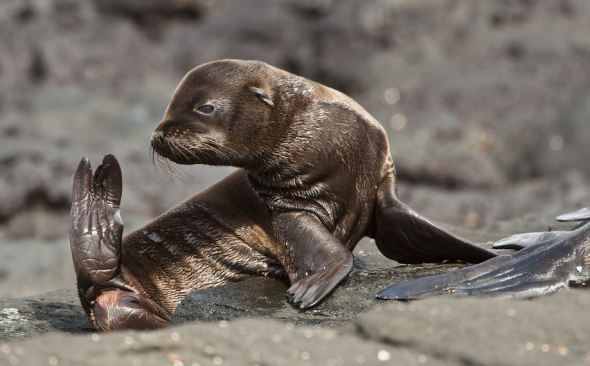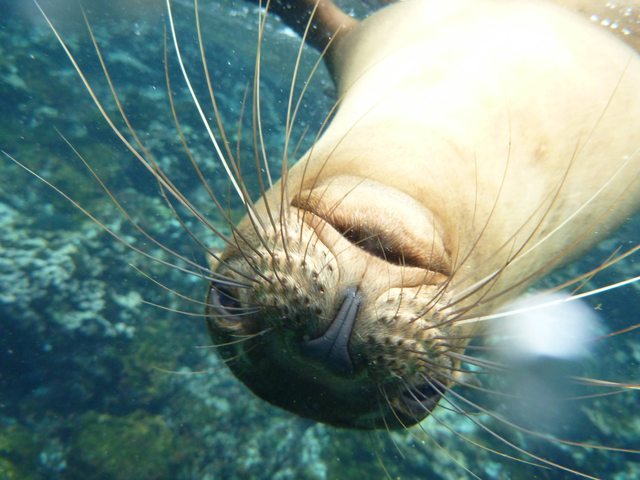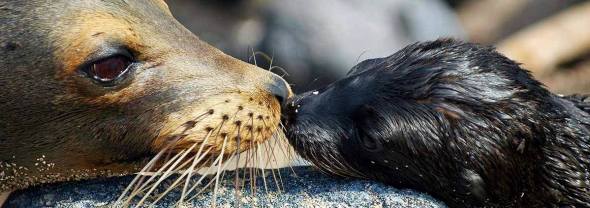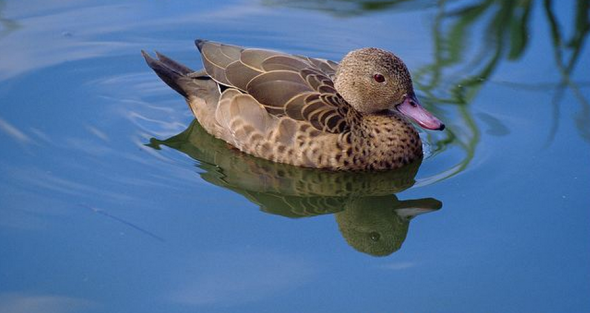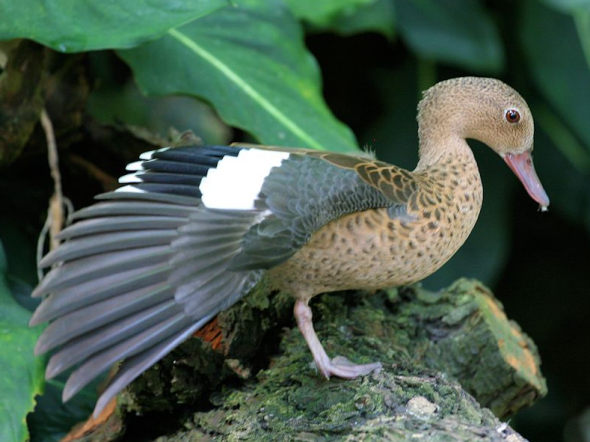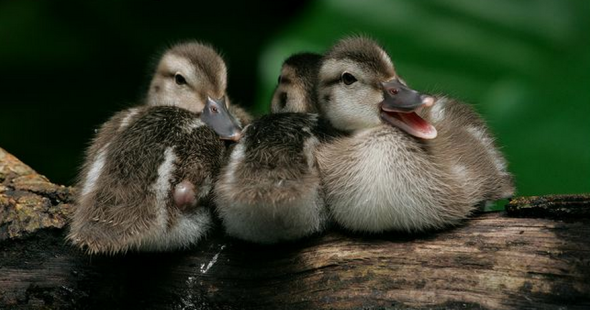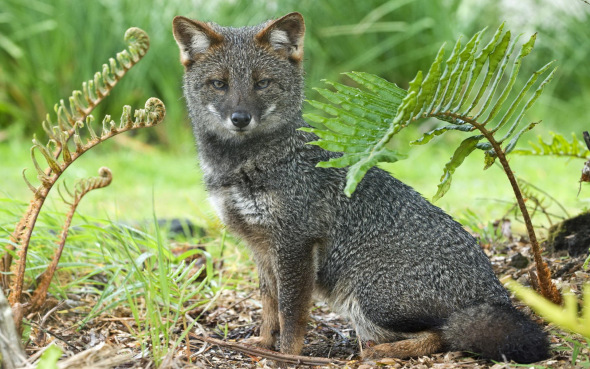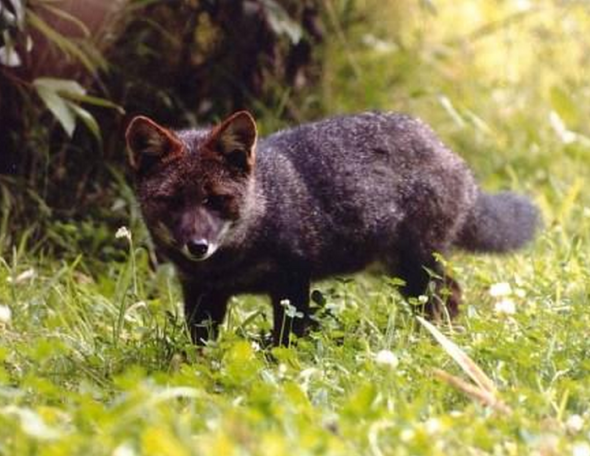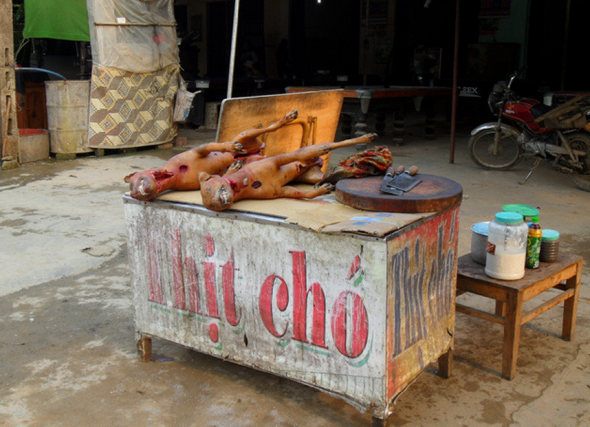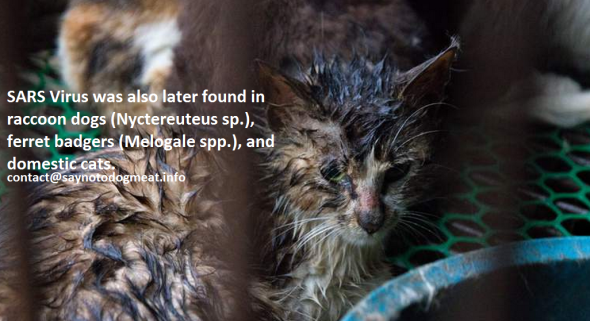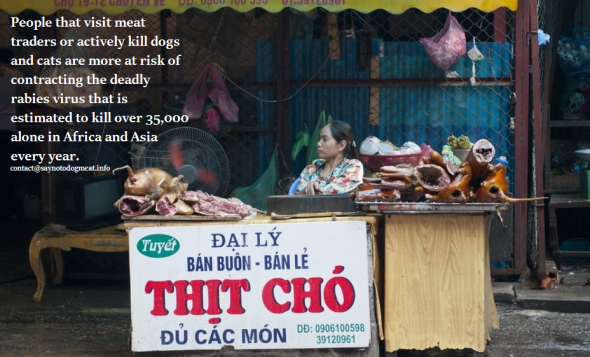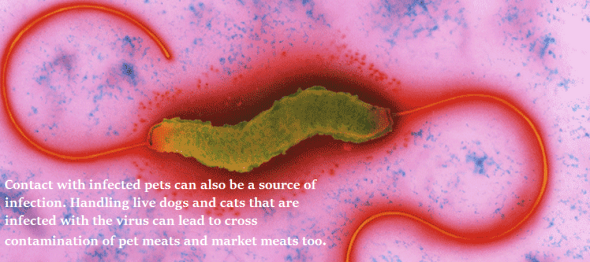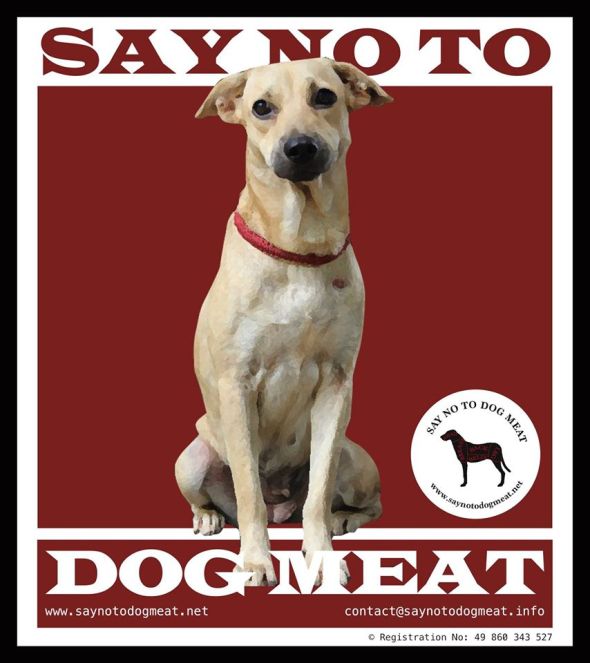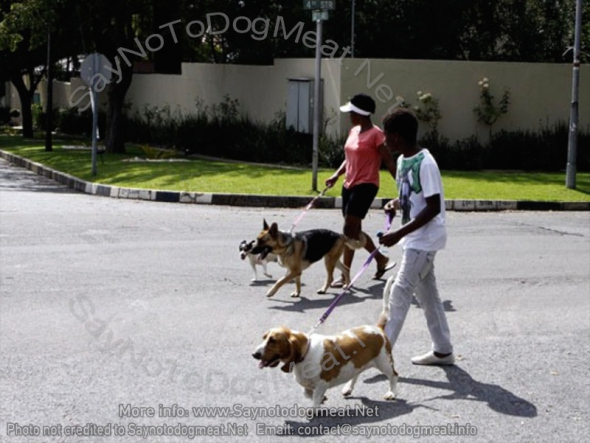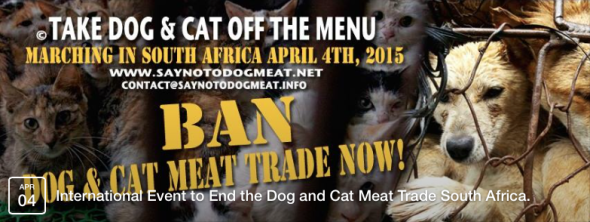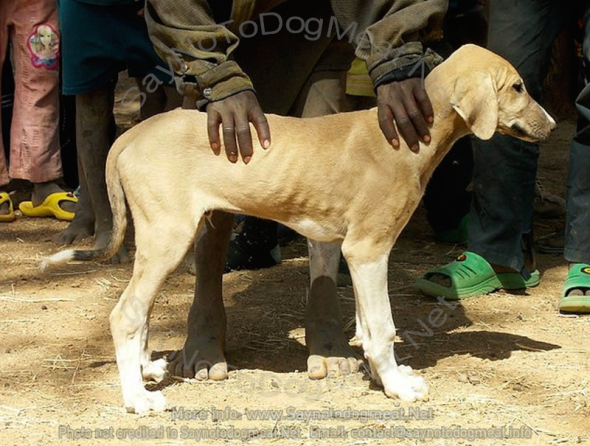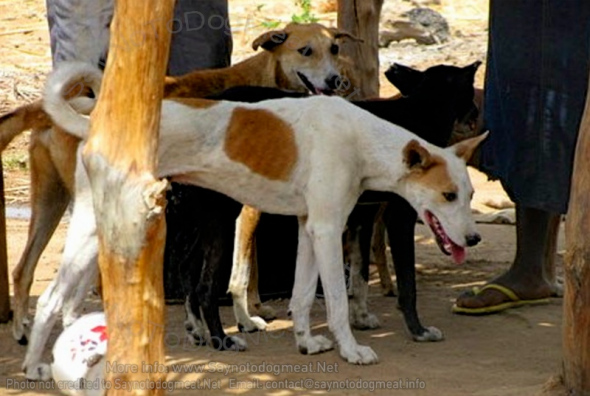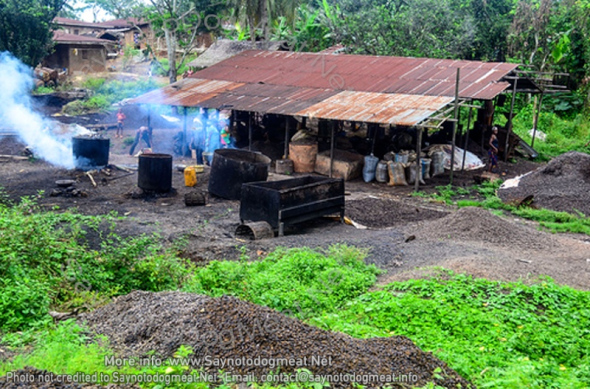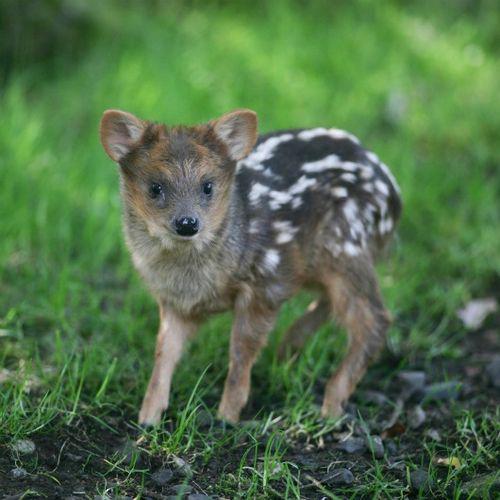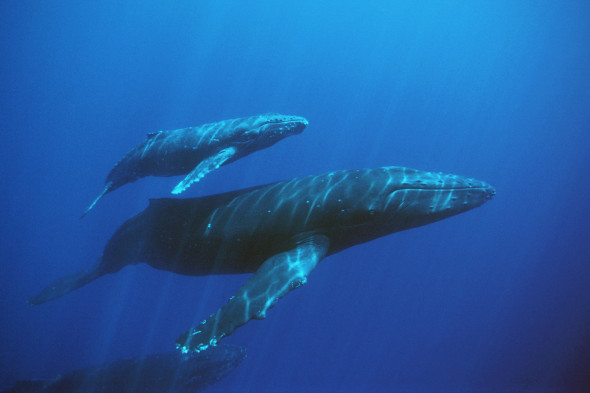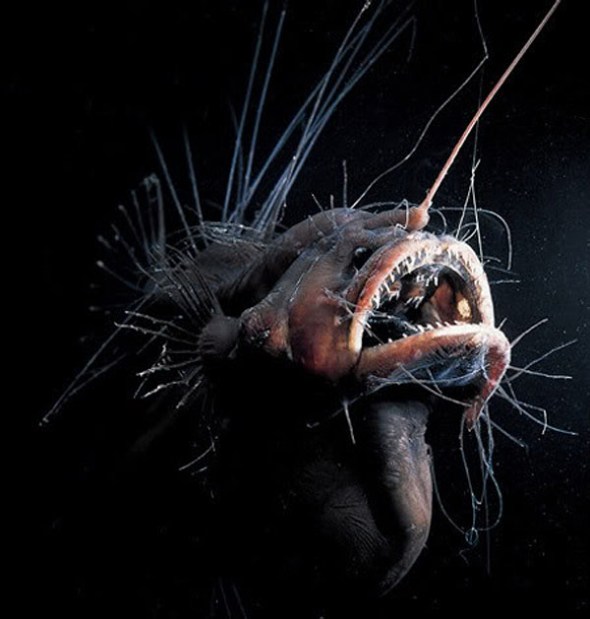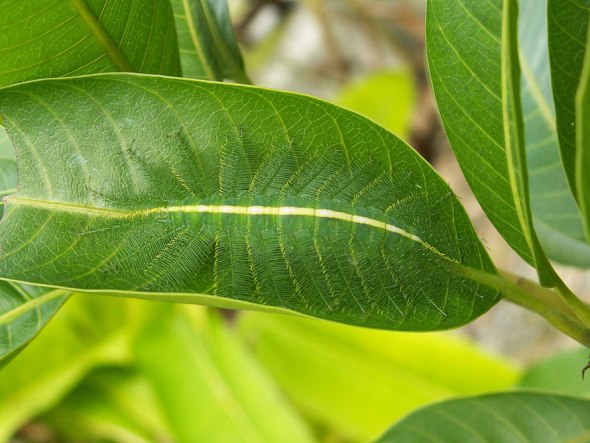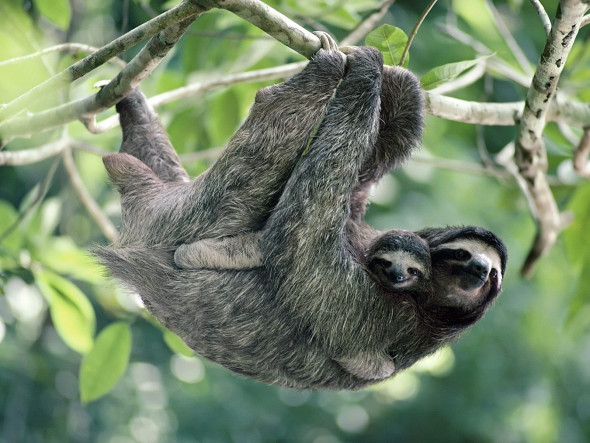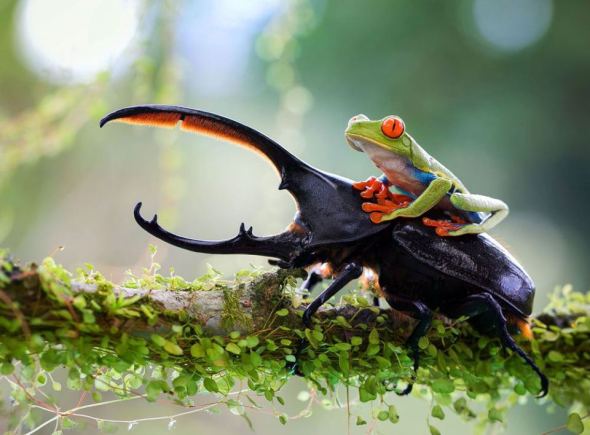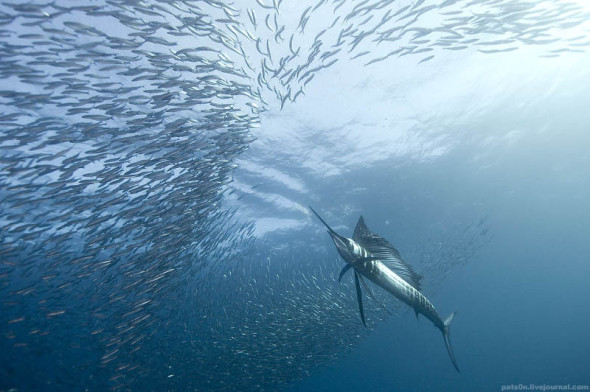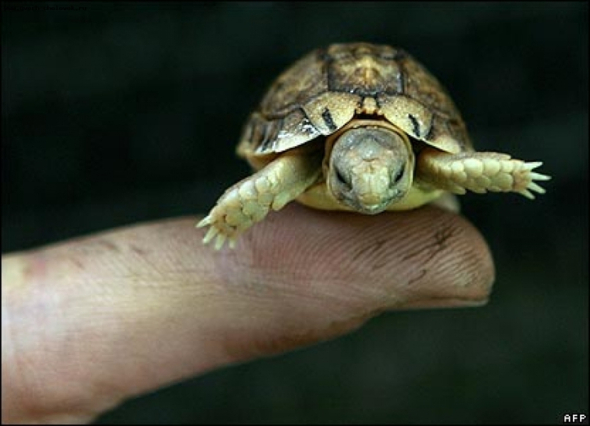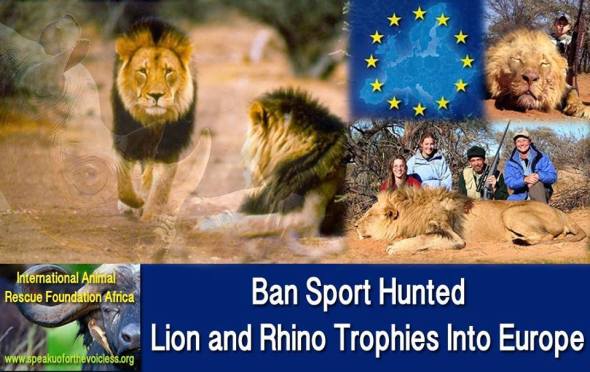Endangered Species Friday - Arborophila rufipectus
Endangered Species Friday - Arborophila rufipectus
This Friday’s endangered species I document on yet another species of bird that’s sadly been added to International Animal Rescue Foundation’s Bird Watch Project. Scientifically identified as the Arborophila rufipectus and commonly known as the Sichuan Partridge the species is listed as endangered - nearing extinction. (Image adult Sichuan Partridge). Listed as a nationally-protected species in China. In 1998, it was recorded in Mabian Dafengding Nature Reserve, where there was estimated to be 192 km2 of potentially suitable habitat.
Identified by Dr Boulton in 1932 the species falls into the phasianidae family. A. rufipectus is restricted to its endemic range of China from which its known to inhabit the south-central Sichuan, China with some sketchy reports of the species documented within Yunnan.
Reporting from Singapore where one of five of our Asiatic Bird Watch Projects are situated, environmental teams stipulated from their visits into China within the past fourteen months, no current camera trappings of the species have been recorded within its native range, or ranges where past census’s have been undertaken.
Furthermore the team exhausted all other searches by widening the search covering a total of 2,100 km2. Observations were undertaken in key areas where it was deemed the Sichuan Partridge may be inhabiting taking into consideration food sources, areas of forest that hadn’t been logged while communicating to local hunters, poachers and, locals within the area.
Graduate Lee Won - International Animal Rescue Foundation’s Bird Watch Project CEO stated “We covered an area over the 1,700 km2 setting camera traps within Sichuan and Yannan (2014-2015). The traps were in place for exactly 14 months of which not one single individual or even a pair of Sichuan Partridges were recorded, which brings me and the team to the conclusion that its quite possible extinctions have already occurred, western environmental organisations have as yet to catch up on this data”.
Lee Won and the team that are working within extreme environments stated that vast deforestation is increasing within the birds natural environment of which enforcement and environmental protection remains to be seen. “If Chinese authorities and the Department of Forests and Environment do not protect the Yunnan forests there will be little flora or fauna remaining within this area by 2030” Won stated. The situation is more than dire, its tragic Lee confirmed.
With populations still recorded as “decreasing” the last known census recorded from 1996-1997 recorded an “estimated” total of 806 to 1,772 mature individuals (final count stood at 1,500-3,749). So from Lee Won and his teams evaluations its quite possible that extinction has occurred of which evidence will be submitted in due course to the International Union for the Conservation of Nature (IUCN).
Dai bo (2007) stated that new sightings of the Sichuan Partridges have been recorded within Laojunshan Nature Reserve numbering around eighty four individuals, these sightings were recorded from 1998-2002. Kim Won’s Bird Watch Project will be making their way to the Laojunshan Nature Reserve in the next few weeks in the hope to locate any evidence of the birds present occupation within the area. Unfortunately we remain skeptical. As explained from 1996/7 population estimate is likely to be too low, hence it is best placed in the band 1,000-2,499 mature individuals. This equates to 1,500-3,749 individuals in total, rounded here to 1,500-4,000 individuals. (Source IUCN).
Males are territorial and monogamous. Males will stay away from the females before mating and during the incubation period. At all other times, males will roost alongside the females. While females are brooding on the ground, the males will sit near the ground for two weeks and then leave to roost elsewhere. The breeding season is late March while the hatching season is mid-May through mid-July. Once paired, males will guard females 24 hours a day.
Image: Sichuan Partridge fledgling.
When it comes to the general breeding and habitat locations for the partridge, it prefers more local areas far from direct disturbances from human contact. Males have three types of one-syllable call, which are a crowing call, courtship call, and preserving territory call. The syllable duration is significantly different between calls, but the difference of main peak frequency was not significantly different. The vocal behaviors will benefit to preserve mates and avoid the predator pressure so the population could last longer.
The Sichuan partridge lives mostly in southern Sichuan Province, in south-west China. It prefers primary and older planted secondary broadleaf forests, rather than one with human activity close by. Prefers a dense canopy and more open understory. The major habitats (in ranking order) are Primary Broadleaf Forest, old replanted Broadleaf Forest, Degraded Forest, and scrub. It prefers thick shrubs for roosting.
Recent work on the species in Laojunshan Nature Reserve found that the species occurred in secondary broadleaf forest but not in settlements, coniferous plantations or farmland [please note there remains no date regarding recent work]. The same study found that birds typically occurred between 1400 and 1800m above sea level in the reserve, and mostly on gently sloping ground close to water sources. [undated with citation required].
Major Threats
Until recently the main threat was habitat destruction through commercial clear-felling of primary forest, as most remaining primary broadleaved forest within its known range was at risk from logging within 20-25 years. In 1998, a government-imposed ban on logging in the upper Yangtze Basin led to a complete halt in deforestation throughout its range.
There is now a major forest plantation scheme in operation aiming to re-forest ridges and steeper slopes. In general though, habitat is still declining. In some areas, forest is still being cleared for agriculture or illegally logged, although this has been “alleged to be on a small scale”. Many people enter the forest to collect bamboo shoots, firewood and medicinal plants in spring and early autumn, which creates substantial disturbance during the breeding season, and additional disturbance is caused by livestock either grazing in, or moving through, the forest.
The species is also illegally hunted. Hydroelectric schemes and the resulting reservoirs in the valleys below its mountain forest habitat cause indirect future threats as the people they displace will be moved to higher locations in close proximity to the remaining forest, putting it under increased pressure.
Further assessments on the species and other endemic species will continue through to next year. I hope to update you on my teams current goals and objectives.
Thank you for reading.
Dr Jose C. Depre.
www.speakupforthevoiceless.org
Please support the organisation Say No To Dog Meat this Malbok Festival from July to August 2015.
Endangered Species Friday - Arctocephalus galapagoensis
Endangered Species Friday - Arctocephalus galapagoensis
This Fridays endangered species article we take a brief look into the life of the Galapagos Fur Seal, scientifically identified as Arctocephalus galapagoensis, and identified back in 1904 by marine biologist Dr Heller. Listed as endangered the species is endemic to Ecuador, and the Pacific South East. Pictured above is one of many declining colonies of the Galapagos Fur Seal Pups (credited to Stephanie Brand) from Arizona, United States.
Back in 1982 the species was officially declared “out of danger” however from 2010 reports soon came flocking in that the Galapagos Fur Seal was again listing back into its old threatened status. From 1996 evaluations of the species saw A. galapagoensis relisted as (vulnerable).
Further opinionated evaluations by marine biologists Baillie and Groombridge confirmed the species was sadly nearing the realms of endangerment (1996). Census’s of A. galapagoensis (2010) have unfortunately relisted the species as now (endangered). A final evaluation of species populations now confirms populations are declining, very rapidly.
Back in 1978 environmentalists conducted a marine census of the species that placed the population size at some 30,000 to 40,000 individuals. El Niño which is the warm phase of the El Niño Southern Oscillation (commonly called ENSO) and is associated with a band of warm ocean water that develops in the central and east-central equatorial Pacific (between approximately the International Date Line and 120°W), including off the Pacific coast of South America, has been blamed for high mortality rates of seal pups.
Image: Galapagos Fur Seal
Population sizes have been said to be (fluctuating) since the last in-depth populastion report on the species back in the mid to late nineteen seventies. Recovery since this time is currently unknown, however reports from 2010 can be viewed here that do provide further although little information on recovery at least. Surveys undertaken since the last 2010 report now place the number of A. galapagoensis at a depressing 10,000 to 15,000 individuals. That’s quite a significantly large decline since the species last census count, and on discovery of which population sizes were over 70,000-90,000 individuals 1904-1908-(census).
Galápagos Fur Seals live in large colonies on the rocky shores. These colonies are then divided into territories by the female seals during breeding season, which is mid-August to mid-November. Every mother seal claims a territory for herself and breeds her pup there. Galápagos Fur Seals have the lowest reproductive rate reported in seals, and it takes an unusually long time to raise seal pups to independence.
Females bear only one pup at a time, and she remains with her newborn for a week before leaving to feed. She then periodically returns to the pup and stays to suckle it for a few days before leaving on another hunting trip. Females recognize their own pups by smell and sound, and pups also learn to identify their mothers by the females’ “Pup Attraction Calls”.
Mother-pup recognition is crucial because females exclusively nurse their own pups, often violently rejecting strange pups that approach. Orphaned seal pups usually try to sneak up on sleeping or calling females to suckle, but stealing milk is not enough to sustain the pups, and they usually die within a month.
The Galápagos Fur Seal feeds primarily on fish and cephalopods. They feed relatively close to shore and near the surface, but have been seen at depths of 169 m (554 ft). They primarily feed at night because their prey is much easier to catch then. During normal years, food is relatively plentiful. However, during an El Niño year, there can be fierce competition for food, and many young pups die during these years. The adult seals feed themselves before their young and during particularly rough El Niño years, most of the young seal populations will die.
The Galápagos Fur Seal has virtually no constant predators. Occasionally, sharks and orcas have been seen feeding on the seals, but this is very rare. Sharks and orcas are the main predator of most other seal species, but their migration paths do not usually pass the Galápagos.
Image: Galapagos Fur Seal and Cub
Threats
Similar to all southern fur seals there was a severe population decline as a result of 19th century exploitation by sealers and whalers. The species was near extinction early in the 20th century and has since recovered (although as explained species populations are declining and the Galapagos Fur Seal species are listed as endangered).
El Niño events dramatically elevate mortality rates of all age classes and cause population declines; this is due to the dramatic declines in productivity around the Archipelago during these events. Tourism in the Galápagos, which is an Ecuadorian National Park, is heavy but regulated, and fur seals are protected.
Episodes of entanglement in local net fisheries have been reported and are thought to be increasing over the last years. Feral dogs on Isabela Island which killed fur seals of all ages have been exterminated. This problem could erupt again if other feral dogs find their way to colony sites.
The most serious threat at present is transmission of diseases from dogs to pinnipeds. Like all fur seals, Galápagos Fur Seals are vulnerable to oil spills because of their dependence on their thick pelage for thermoregulation. Although there is limited large vessel traffic in the Galápagos Archipelago, numerous small and medium sized vessels operate in the area that could release moderate quantities of oils, fuels, and lubricants if involved in a marine accident.
Galápagos Fur Seals have experienced declines from El Niño-caused ocean warming and associated reduced marine productivity (Trillmich and Dellinger 1991) estimated of up to 80%, but the exact extent of population reduction is not clear. Therefore, although the effects of global climate change on this species and its habitat are uncertain at this time, it is possible that any change related disruption of present day ocean currents, levels of marine productivity, or increased air temperatures at haul out sites would adversely affect this species.
Despite their population size, the Galápagos Fur Seal population will always be vulnerable to a variety of threats because of the species’ restricted distribution to a relatively small Archipelago of islands.
International Animal Rescue Foundation Brazil worked with these stunning animals for approximately a year and a half. The South American organisation has sadly stated that the species may soon be extinct within the next decade. Despite “any” protection measures that we or other throw at the species we have non-human and non-animal natural events that could wipe the entire species out in a single El Nino season.
Thank you for reading.
Chief Executive Officer/Chief Environmental Officer
Dr Jose C. Depre.
International Animal Rescue Foundation Africa - Asia.
info@international-animalrescue-foundation.org.uk
Chief Environmental Officer South America and Europe. (Head Registrar).
Dr J. Williamson EnVstu. PhD, Ba.
International Animal Rescue Foundation Europa - South America - United States
info@international-animalrescue-foundation.org.uk
Have you spotted a typo or error? Please email us above and we’ll work to rectify the problem as soon as possible.
Endangered Species Friday: Anas bernieri.
Endangered Species Friday - Anas bernieri
This Friday’s endangered species article I focus on my eighteenth “Madagascan” species of wildlife since establishing International Animal Rescue Foundation’s Endangered Species Watch Post one and half years ago. I very much doubt too that this will by mine or the teams last such species of Madagascan native animal to print on nearing extinction, simply because the island is rapidly being overcome by humans, habitat destruction and poaching.
Endemic only to the Africans island of Madagascar the the A. bernieri as the species is scientifically known was primarily identified back in 1860 by Dr Karel Johan Gustav Hartlaub (8 November 1814 – 29 November 1900) was a German physician and ornithologist.
Dr Hartlaub was born in Bremen, and studied at Bonn and Berlin before graduating in medicine at Göttingen. In 1840, he began to study and collect exotic birds, which he donated to the Bremen Natural History Museum. He described some of these species for the first time. Dr Hartlaub has been described by many leading ornithologists as an expert in bird wildlife and conservation and, has been ranked as one of few such experts that has identified over hundreds species of birds globally.
Listed as (endangered) the species is commonly known as the Bernier’s Teal or just Madagascar Teal. The species is uncommonly viewed within western Madagascar of which it can be found along the western coast and, north east. Bernier’s Teal is known to breed at the Menabe and Melaky on the central west coast, and at Ankazomborona on the far north-west coast. Between July and August (1993) the species was observed at Antsalova and Morondava of which a census recorded a total of some 200-300 mature individuals. Back in 1998 a small flock was observed in Tambohorano totaling some 60-70 mature individuals.
Furthermore in 1998 a new a new breeding colony numbering some 200-300 mature individuals was recorded in Ankazomborona. Meanwhile the population noted at Baie de la Mahajamba was estimated to be between some 100-200 mature individuals. (Please note that due to lack of census counts and close monitoring these population numbers above may differ from any future or now census counts) however the Durrel Wildlife Conservation Trust is helping to preserve one of the worlds most incredibly rare birds.
The total mean population count of which could be lower than the last census undertaken back in 2007 stands at a pathetic and measly 1,200 to 1,700 mature individuals today. However due to mass deforestation, pollution, habitat fragmentation and destruction and, poaching, Etc, its quite possible populations of the A. bernieri have plummeted way below the last 2002 and 2007 census count.
The Madagascar Teal is of the Anas genus and is a dabbling duck. Huge areas of wetlands are being drained or altered for human activities such as farmland, rice paddies and prawn ponds. Their wooded habitat is also being destroyed for timber which effects their breeding. Due to the increase of humans in their area, hunting has also increased for so called sport and meat.
Threats
Listed on (Cites) Convention on International Trade of Endangered Species Wild Flora and Fauna the species is listed on Appendix II of which is threatened by a large number of mostly human threats. The species is now extremely threatened throughout its breeding range, by extensive habitat loss and disturbance. The distribution of known sites suggests that the single subpopulation is being fragmented as areas of habitat become unsuitable.
The species has limited dispersal capabilities and isolation may result in the loss of genetic diversity. Furthermore it is threatened by virtue of being highly specific to a series of habitats - which are themselves threatened - throughout its annual cycle. Conversion of shallow, muddy water-bodies to rice cultivation has been so widespread on the west coast that in the non-breeding season the species now appears to be confined to the few suitable wetlands that are too saline for rice-growing, i.e. some inland lakes and coastal areas such as mudflats.
In 2004, during a dry-season survey in Menabe, this species was only found in saline wetlands. Pressures on coastal wetlands are exacerbated by the movement of people from the High Plateau to coastal regions, which is driven by the over-exhaustion of land. Mangroves are under increasing pressure from prawn-pond construction and timber extraction, which also leads to massively increased hunting. Subsistence hunting during the nesting season and the trapping of molting birds are major threats too. It is considered a delicacy by hunters and was found in markets in Sofia in 2011.
See more here on the video above. http://harteman.nl/pages/anasbernieri
In contrast, the breeding site at Ankazomborona is not threatened by aquaculture and there is little pressure from subsistence hunters, though there is some pressure from “sport hunters”. Breeding birds may suffer disturbance from human activity, such as the collection of crabs. The species is potentially in competition for the use of suitable nest-holes with the Comb Duck Sarkidiornis melanotos, parrots Coracopsis species and nocturnal lemurs, Lepilemur species and Cheirogaleus species, though lemurs are absent in mangroves. Breeding is from December to March. Diet consists of mainly insects.
In all its very likely that we will lose the Madagascan Teal within the wild in next to three to five years unless conservation efforts drastically and rapidly improve and, the Madagascar Ministry of Environment and Forests tackles poaching, habitat fragmentation, destruction and human interference sooner rather than later. I personally believe from my last visit to Madagascar back in 2013 its very unlikely the M. Teal or any other species listed as critically endangered will continue to thrive for years to come. Catastrophic habitat destruction on the island is threatening hundreds of over a hundred species of medium and large mammalians.
How can I help? The “Durrell Wildlife Conservation Trust” are currently undertaking amazing captive breeding programs of the Madagascan Teal that is known to be one of the worlds most rarest birds. You can help by supporting the Durrell Wildlife Conservation Trust and making a donation to their organisation that will help increase captive breeding colonies for later release back into the wild. Even if the species cannot be released back onto the island of Madagascar (should extinctions occur), reintroduction programs elsewhere will continue to keep this species alive for future generations to come. You never know the species may be coming to a home somewhere near you soon. Please donate and contact the D.W.C.T <here for further information.
Thank you
Dr Jose C. Depre
Environmental and Botanical Scientist.
International Animal Rescue Foundation Africa.
For further information or if you’d like to help in upcoming events this year or in the future please contact the Environmental team here today. info@international-animalrescue-foundation.org.uk
Endangered Species Monday: Pseudalopex fulvipes.
Endangered Species Monday - Pseudalopex fulvipes
In this Monday’s endangered species article we focus our attention on the species of fox commonly known as the Darwin fox. Identified by Dr William Charles Linnaeus Martin (1798 - 1864). Dr Martin was an English naturalist.William Charles Linnaeus Martin was the son of William Martin who had published early color books on the fossils of Derbyshire, and who named his son Linnaeus in honor of his interest in the classification of living things.
Listed as CRITICALLY ENDANGERED the species was scientifically identified as Pseudalopex fulvipes endemic to Chile, Los Lagos. Charles Darwin collected the very first evidence of this rather stunning species back in 1834 however was not the primary identifier despite the species name. Since 1989 the fox has been re-monitored to determine its current population sizes and future classification. I am somewhat skeptical that this species will survive into the next five years even with more in-depth wild analysis - the species in my own expert opinion is doomed.
One fox was observed and captured back in 1999 for data and breeding with a further two adults captured back in 2002 in Tepuhueico. That same year it was noted a local as killing a mother and her cubs which amassed to some four Darwin foxes witnessed dead and alive within the wild since revaluation of species began from 1989. Some evidence although (little documented) has confirmed “sightings” of Darwin foxes during the year of 2002 however, these are sketchy reports.
On mainland Chile, Jaime Jiménez has observed a small population since 1975 in Nahuelbuta National Park; this population was first reported to science in the early 1990s. It appears that Darwin’s Foxes are restricted to the park and the native forest surrounding the park. This park, only 68.3 km² in size, is a small habitat island of highland forest surrounded by degraded farmlands and plantations of exotic trees. This population is located about 600 km north of the island population and, to date, no other populations have been found in the remaining forest in between.
Darwin’s Fox was reported to be scarce and restricted to the southern end of Chiloé Island. The comparison of such older accounts (reporting the scarcity of Darwin’s fox), with recent repeated observations, conveys the impression that the Darwin’s Fox has increased in abundance, although this might simply be a sampling bias.
As explained even with a very, very small increase in sightings - populations are declining and sadly we may be reporting in the next year or two an (extinction in the wild) occurring if not a complete extinction overall. Should that happen we’ve lost the entire species for good.
Darwin foxes are said and known to be forest dwelling mammals which could be why environmental surveys are proving to be fruitless. Darwin foxes occur only in southern temperate rainforests. Recent research on Chiloé, based on trapping and telemetry data on a disturbance gradient, indicates that, in decreasing order, foxes use old-growth forest followed by secondary forest followed by pastures and openings. Although variable among individuals, about 70% of their home ranges comprised old-growth forest.
Protected under Chilean law since 1929 the Darwin fox are listed on Cites Appendix II (Convention on International Trade of Endangered Species wild flora and fauna). Conservation actions that are under way in the Nahuelbuta National Park are to increase species populations and establish overall protection within this range. Temuco zoo did hold one single species of which was believed to be held for protective captive breeding however the fox has since died back in 2000.
Threats
Although the species is protected in Nahuelbuta National Park, substantial mortality sources exist when foxes move to lower, unprotected private areas in search of milder conditions during the winter. Some foxes even breed in these areas. This is one of the reasons why it is recommended that this park be expanded to secure buffer areas for the foxes that use these unprotected ranges.
The presence of dogs in the park may be the greatest conservation threat in the form of potential vectors of disease or direct attack. There is a common practice to have unleashed dogs both on Chiloé and in Nahuelbuta; these have been caught within foxes’ ranges in the forest. Although dogs are prohibited in the national park, visitors are often allowed in with their dogs that are then let loose in the park.
There has been one documented account of a visitor’s dog attacking a female fox while she was nursing her two pups. In addition, local dogs from the surrounding farms are often brought in by their owners in search of their cattle or while gathering Araucaria seeds in the autumn. Park rangers even maintain dogs within the park, and the park administrator’s dog killed a guiña in the park. Being relatively naive towards people and their dogs is seen as non-adaptive behaviour in this species’ interactions with humans.
The island population appears to be relatively safe by being protected in Chiloé National Park. This 430 km² protected area encompasses most of the still untouched rainforest of the island. Although the park appears to have a sizable fox population, foxes also live in the surrounding areas, where substantial forest cover remains. These latter areas are vulnerable and continuously subjected to logging, forest fragmentation, and poaching by locals. In addition, being naive towards people places the foxes at risk when in contact with humans. If current relaxed attitudes continue in Nahuelbuta National Park, Chiloé National Park may be the only long-term safe area for the Darwin’s Fox.
No commercial use. However, captive animals have been kept illegally as pets on Chiloé Island.
Current estimates place the species population count at a mere 250 left within the wild.
Thank you for reading.
Please share and lets get this fox the protection it requires through education, awareness and funding.
Links for interest:
Adopt a Darwin Fox.
General Information.
Dr Jose C. Depre.
International Animal Rescue Foundation Africa.
info@international-animalrescue-foundation.org.uk
International Animal Rescue Foundation Africa.
Donate to Say No To Dog Meat today.
Please May I Order Some Brucellosis With My Pet Meat?
What’s wrong with this photograph taken from a Viet Nam road side dog market stall?
You may think that is somewhat of a rather stupid question, a photograph of a dog meat traders stall in Viet Nam, seems rather innocent looking doesn’t it. Look beyond the photograph though. What do you see, nothing? Good now we’re onto a winner as this article you need to take heed off, share, and use in your quest to halt the global unregulated pet meat trades. If you cannot see nothing other than two dogs on a filthy dirty market traders stall then its time I opened your eyes a little more.
My name is Dr Jose C. Depre Director one for Say No To Dog Meat and the Chief Environmental Officer and Executive for International Animal Rescue Foundation and the Environmental Protection and Animal Welfare Agency.
Okay, so, many people believe that dogs and cats should not be eaten in Africa or Asia simply because they are pets. While I and my founders agree with this statement [to a degree] we cannot just leave it at that. When we read, hear or witness the act of [unregulated food trades] it seriously does send shivers down our spine…. The THREAT of DISEASE is why we should not be consuming any form of pet meat or any meat that derives from an unregulated trading source.
The pet meat trade is no different to the bush meat trade that our environmental company is actively targeting in western Africa. Both trades are again unregulated and both trades have shown to harbor infectious diseases, contagious pathogens, and added pharmaceutical synthetic medications which has led to many deaths worldwide, poisonings and illness. So when we hear or read that one should not eat pets because they are simply friends it does concern us especially when we read such information published from allegedly reputable charities. These charities should be looking more further afield than merely seeing dogs and cats or bush meat animals as just pets and wildlife.
AFRICAN AND ASIAN FOOD: RUSSIAN ROULETTE
Trading and Slaughtering of Pets and Infectious Diseases
FACT: Seventy-five per cent of emerging diseases move to humans from wildlife or stray dogs and cats, either directly or via our livestock. The bushmeat and pet meat trade could provide a hidden conduit for disease transmission which has been concerning environmental teams and scientists for some years.
FACT: The legal trade in exotic pets and live dogs and cats is already known to pose a similar risk. In 2003, an outbreak of monkeypox infected dozens of people across several US states. It was traced to an animal dealer near Chicago, where an imported Gambian giant rat gave the virus to prairie dogs that were later sold as family pets.
Live dogs and cats that are abducted from the streets of Asia and Africa could/do potentially harbor human killing virus’s. The SARS coronavirus, sometimes shortened to SARS-CoV, is the virus that causes severe acute respiratory syndrome (SARS). In April 16th of 2003, following the outbreak of SARS in Asia and secondary cases elsewhere in the world, the World Health Organization (WHO) issued a press release stating that the coronavirus identified by a number of laboratories was the official cause of SARS. Samples of the virus are being held in laboratories in New York, San Francisco, Manila, Hong Kong, and Toronto.
Below I have included reams of information that Say No To Dog Meat and International Animal Rescue Foundation Africa are currently utilizing at our disposal to end the barbaric and highly infectious pet meat trade. I please ask all Non-Profits to contact myself and team here at contact@saynotodogmeat.info to help us in our quest to now close down illegal and legal traders of pet meat.
Severe Acute Respiratory Syndrome
Evidence is still somewhat sketchy regarding the transmission of SARS from dogs and cats to humans, however research has pinpointed the virus to have emerged from the markets that dogs, cats and other live stock are sold within.
According to the World Health Organization (WHO), a total of 8,098 people worldwide became sick with SARS during the 2003 outbreak. Of these, 774 died. In the United States, only eight people had laboratory evidence of SARS-CoV infection. All of these people had traveled to other parts of the world with SARS. SARS did not spread more widely in the community in the United States.
The main way that SARS seems to spread is by close person-to-person contact. The virus that causes SARS is thought to be transmitted most readily by respiratory droplets (droplet spread) produced when an infected person coughs or sneezes. Droplet spread can happen when droplets from the cough or sneeze of an infected person are propelled a short distance (generally up to 3 feet) through the air and deposited on the mucous membranes of the mouth, nose, or eyes of persons who are nearby. The virus also can spread when a person touches a surface or object contaminated with infectious droplets and then touches his or her mouth, nose, or eye(s). In addition, it is possible that the SARS virus might spread more broadly through the air (airborne spread) or by other ways that are “not now known”. [This area of research is still open].
The CDC and a Canadian laboratory identified the SARS genome in April, 2003. Scientists at Erasmus University in Rotterdam, the Netherlands demonstrated that the SARS coronavirus fulfilled Koch’s postulates thereby confirming it as the causative agent. In the experiments, macaques infected with the virus developed the same symptoms as human SARS victims.
In late May 2003, studies from samples of wild animals sold as food in the local market in Guangdong, China, found the SARS coronavirus could be isolated from masked palm civets (Paguma sp.), but the animals did not always show clinical signs. The preliminary conclusion was the SARS virus crossed the xenographic barrier from palm civet to humans, and more than 10,000 masked palm civets were killed in Guangdong Province.
Virus was also later found in raccoon dogs (Nyctereuteus sp.), ferret badgers (Melogale spp.), and domestic cats. In 2005, two studies identified a number of SARS-like coronaviruses in Chinese bats. Phylogenetic analysis of these viruses indicated a high probability that SARS coronavirus originated in bats and spread to humans either directly or through animals held in Chinese markets.
The bats did not show any visible signs of disease, but are the likely natural reservoirs of SARS-like coronaviruses. In late 2006, scientists from the Chinese Centre for Disease Control and Prevention of Hong Kong University and the Guangzhou Centre for Disease Control and Prevention established a genetic link between the SARS coronavirus appearing in civets and humans, bearing out claims that the disease had jumped across species.
SARS never did originate from canines however more from felines and other wild market animals. There is no evidence to date that proves SARS ever did infect people via the consumption of infected dogs however evidence is clear to day that SARS sufferers that consumed infected cat meat did later on become SARS positive. It must also be noted that investigations pinpointed a wide range of animals both domestic and wild that can host and pass the deadly SARS virus on.
Rabies
Eating dog meat is common in many Asian, western and northern African countries, but research conducted as part of the South East Asian Infectious Diseases Clinical Research Network has discovered a potentially lethal risk associated with preparing dog meat: rabies.
Rabies is a very serious – and in nearly all cases fatal – disease. It is estimated to kill over 30,000 people each year in Asia, and the number of cases in China and Viet Nam is increasing. Symptoms include agitation, severe spasms, fever, fear of water and inability to drink liquids, and eventually death. Humans are usually infected after being bitten by an infected animal such as a dog or bat.
Researchers investigated whether the patients had come into contact with infected animals in the preceding months, they found that both had been involved in preparing and eating animals which may have been infected. In the first patient’s case, he had prepared and eaten a dog that had been killed in a road traffic accident; rabid dogs were known to inhabit the neighbourhood. The second patient had butchered and eaten a cat that had been sick for a number of days.
In both cases seen by Dr Wertheim and colleagues, it is thought that infection occurred during the slaughtering, and not by eating the meat as the meal was shared by others who did not become infected. In Asia, it is believed that eating dog meat enhances health and longevity. It is eaten throughout the year in the second half of the lunar month, particularly in the winter months, when it is believed to increase body heat. In Viet Nam, dogs with rabies have been detected in dog slaughterhouses and workers at dog slaughterhouses are vaccinated against rabies as part of the national programme for rabies control and prevention. However, the private slaughter of dogs is relatively common in the country.
Moving over to Africa there slaughterhouses are very uncommon however still do exist. In Liberia and Nigeria for instance dogs and cats are either take from the streets dead or alive then transported for hundreds of miles within dirty unhygienic meat trucks. Dead dogs and cats are thrown into heaps ready to be butchered without a care in the world as to weather these dogs and cats have the deadly rabies virus. Meanwhile live dogs and cats that survive the long haul road trips from Niger or Southern Africa into Liberia and/or Nigeria are thrown into cages where their fate comes quickly. No thought nor care goes into weather these dogs and cats may harbor rabies virus.
Rabies occurrence in man and domestic animals is well known but the importance of wild animals in its spread has not been determined. To date, no effective medical therapy has been established for overt rabies. Preventive vaccination against rabies virus is a highly effective method for preventing rabies in humans and animals. The rabies Post-Exposure Prophylaxis (PEP), which is a serial vaccination against rabies starting as soon as possible after the patient was bitten by a suspected rabid animal, is the only way to prevent death. In Nigeria where dog bites continue to be the main mode of transmission of the disease to man, it remains a serious public health hazard. People that visit meat traders or actively kill dogs and cats are more at risk of contracting the deadly rabies virus that is estimated to kill over 35,000 alone in Africa and Asia every year.
Dr Chika Nnwosu has said that about 55,000 persons die of rabies disease every year in the world with 55 deaths recorded per hour. Of these deaths According to him, 30,000 of such death was from Asia, and 10,000 recorded in Nigeria alone, while the remaining 15,000 occur in other parts of the African continent. Say No To Dog Meat and International Animal Rescue Foundation Africa have shown that the majority of these deaths recorded are within “pet meat consumption zones” and “known stray dog and cats zones”. Records have also shown that about three million people mostly from Africa, Asia and other developing countries of the world are living in rabies endemic areas which is concerning.
Food-borne Viruses: Pet meat trade
KNOW THE FACTS - USE THE EVIDENCE - END THE TRADE
The information below is extracted from medical sources and my own medical education of which proves the following viruses can infect people via the consumption of pet meat. There is no reliable evidence to publish [as yet] into the public domain showing the number of people that have fallen ill or sadly died from consuming pet meat infected with food borne viruses.
Salmonellosis
Salmonellosis is the disease caused by one of the many serotypes of the bacterium, Salmonella enterica. It is one of the most common causes of bacterial foodborne illness worldwide, second only to campylobacteriosis. All species, including humans, may be infected by Salmonella bacteria, which live in the intestine and may be shed in faeces. However, Salmonella can survive and multiply very well outside the intestinal tract, which makes eradication impossible. Moreover, fecal contamination of carcasses, milk and eggs cannot be completely prevented. Humans that are carriers may inadvertently spread infection if they handle food without washing their hands after using the toilet. Direct contact with infected animals, including pets, can also be a source of infection. Reptiles are particularly likely to harbor Salmonella and hands should always be washed after handling pets e.g. reptiles. Live dogs or cats that are infected with Salmonellosis can easily infect those killing the dogs and cats and those consuming. Furthermore the unhygienic practice of preparing pet meat and selling within an environment that is not temperature controlled will only see the bacteria multiply by the millions placing human life in danger.
Campylobacter jejuni
Campylobacter jejuni was identified in the early 1980’s as an important enteric pathogen in humans. Prior to this, the organism was thought to be a minor animal pathogen, causing abortion and enteritis in cattle and sheep. Other Campylobacter species are occasionally involved in human disease, including Campylobacter coli. The organism is widespread in the intestines of most warm blooded animals, including cattle, sheep and poultry, and survives particularly well in birds. It rarely causes disease in livestock, although a significant number may be asymptomatic carriers.
Transmission of Campylobacter to humans can occur via contaminated raw or undercooked poultry and meat, unpasteurised milk and untreated water. The organism is particularly common on poultry carcasses, and poultry meat is thought to be an important vehicle for infection. Contact with infected pets can also be a source of infection. While there is little evidence that shows Campylobacter being present in dog or cat meat the dangers are still there and are documented. For instance if dogs and cats are slaughtered within an area where pigs and chickens are slaughtered that are host to the virus its quite easy for both dog and cat meat to become “cross contaminated” with other meats thus leading to secondary food infection and lastly - chronic food poisoning.
Brucellosis
Brucellosis is an infectious disease caused by the various species of the bacterium Brucella. The organism affects cattle, sheep, goats, deer, elk, pigs, dogs and many other species, including humans. Brucella organisms persist within the host’s own cells, where they are protected from the animal’s immune response and can give rise to chronic, recurrent infections.
Humans may be infected through eating contaminated food or drink or through close contact with an infected animal when the organism may be inhaled or acquired via skin wounds. Most cases occur following consumption of contaminated raw milk or dairy products.
Areas of Europe that are currently listed as high risk for brucellosis include the ‘Mediterranean Basin’ (Portugal, Spain, Southern France, Italy, Greece, Turkey, North Africa) and Eastern Europe. It also occurs in South and Central America, the Caribbean, Africa, Asia and the Middle East. Consumption of ‘village cheeses’ in these areas may pose a risk. Consumption of infected dog meat is known to also pose a significant risk to human health. While trade goes un-monitored we’ll never know the full health scares that surround all viruses listed hereto.
Pathogenic E. coli
Escherichia coli is a common bacterium that is found as part of the normal flora in the intestines of all warm-blooded animals, including humans. There are many strains of E. coli, and most do not cause disease. However, some strains can result in serious illness in both humans and animals. The presence of high numbers of E. coli in raw food or water may be a sign of faecal contamination by humans or animals, but does not cause illness in most cases. E. coli multiplies readily wherever the temperature, humidity and nutrients are favourable. As explained above there is very little “regulated documented evidence” carried out on meats such as dog and cat meat.
Its quite possible that deaths have occurred all over Africa and Asia from the consumption of Pathogenic E. coli pet meat. Say No To Dog Meat and International Animal Rescue Foundation Africa will begin taking samples of meats from the pet meaty traders in Africa and Asia sending them onto clinics for clinical studies to further evaluate weather such viruses can indeed be a “danger” to humans from [unregulated, unhygienic and open air traders]… By undertaking such scientific analysis it helps to not only put people off from consuming such potentially infectious foods but also helps in proving to the governments that no trade that is open, unregulated and unhygienic should be open to the public and thus closed down immediately to preserve human life and prevent any form of mutation of viruses. E. coli can be located in dogs and cats as they are both warm blooded animals. “Whats wrong with this photograph taken from a Viet Nam pet meat market stall” the heading of this article states. Well here is one prime example. While one cannot see E. coli E. coli could very well be present on this pet meat above that is neither in a controlled environment nor refrigerated to reduce bacteria from multiplying.
Every year without fail we see many tourists visiting Asia to try out the “local delicacies”. Yet these are not really local delicacies nor hygienic ones. In the modern western world such practices that see meats sold in this manner [pictured below] would see the traders closed down immediately and/or charged with violation of food safety laws. We’ll never know the true extent of how many people have fallen ill or even died from eating contaminated meats.
The picture above illustrates are concerns with regards to food pathogens and humans that place themselves are risk from consuming meats that are not stored in a controlled environment, temperature controlled environment that should be standing at [-0-5oc], vermin and pest controlled or within an unhygienic establishment. The average temperature within say Viet Nam here ranges from 25-29oc. Keeping cooked or even raw meats on display such as this is a recipe for disaster and a food virus perfect environment. How many people have fallen ill from such food borne viruses again we will never know. So for this reason the pet meat trade must be banned.
Trichinellosis
Trichinellosis, or trichinosis, is a parasitic disease of mammals caused by a nematode worm (roundworm) of the Trichinella genus, mainly Trichinella spiralis. The worm gains entry to the body when larval cysts are eaten in infected muscle meat. Gastric juices break down the tough cysts and release infective larvae, which then invade the small intestinal lining and mature to adults. Adult female worms subsequently release larvae that penetrate the intestinal wall and are distributed throughout the body via blood and lymphatic vessels. Only in skeletal muscles, they form cysts, which can remain viable for several years. The life cycle is perpetuated when the infected muscle is eaten by another host.
Although all mammals are probably susceptible, infection is usually confined to carnivorous species, mainly pigs, dogs, cats, carnivorous game, rodents and humans. Horses may occasionally be infected after eating fodder contaminated by decaying rodents. Most infections in domestic and wild animals go undiagnosed, but heavy infestations can give similar signs to those seen in humans.
Human infections are traditionally associated with eating raw or undercooked pork (such as ham or sausage) or wild carnivorous game (including wild boar, bear and seal), concerning we have seen and reported on many Asian citizens that have consumed under-cooked dog meat that have then come down with the Trichinella infection. However, recent outbreaks in Europe have been linked to eating undercooked horse meat. Current EU regulations dictate that all pig, horse and wild boar meat intended for Community trade must be inspected for the presence of Trichinella according to EU standards. There is no evidence to suggest that Trichinella is currently present in UK pigs or horses, and a recent survey found no evidence of infection in the UK fox population. However in Asia and Africa its quite possible there are hundreds if not thousands of cases of Trichinella infection every year - again we’ll never know the full extent as trade is not regulated. We are working though to prove to the governments in Africa and Asia that by allowing such a high risk meat trade to exists one is only placing human life in danger furthermore.
Trichinella is most commonly found in pork however can be located in all mammals including dogs and cats. If the dog or cat you have eaten is not cooked adequately and is infected with the virus you could end up like this rather sorry state of a hunter and his fiends that fell down with the virus. We have decided to show the video - not in support of hunting but to make aware how serious this virus is. Feeling squeamish, look no further.
Taeniasis
Taeniasis is a parasitic disease of humans caused by the tapeworms Taenia saginata (from cattle) or Taenia solium (from pigs). The adult tapeworms are found only in humans, where they attach to the wall of the small intestine and can grow to several metres in length. Egg-containing segments, which are independently motile, are shed by the tapeworm and passed in faeces or migrate through the anus. Infection is usually asymptomatic, but may be associated with diarrhoea, flatulence, abdominal discomfort and weight loss.
Cysticercus cellulosae was found in the brain of three (2.5%) out of 120 rural dogs investigated. The cysts were located in the ventricle, cerebral cortex and subarachnoid spaces. Two (1.7%) of the 120 dogs had dumb rabies and this was confirmed by biological tests. One of these dogs had both cysticerci and Negri bodies in the brain. Apart from locomotor imbalance no other typical clinical signs of rabies were observed. Dumb rabies and cysticerci in dogs being sold to people in rural communities pose potential public health hazards. In areas where dog flesh is used as a source of food, human cysticercosis may occur, and the danger of human rabies must not be overlooked.
Out of a total of 150 carcases of rural dogs examined in Eastern Nigeria, 4 (2.7%) had Cysticercus cellulosae in the heart, tongue, thigh muscles and liver. Visual examination, palpation and multiple serial incision technique were used in locating the cysts. The cysts uncovered were collected in specimen bottles and transported in ice to the laboratory for morphologic assessment. The ages and sexes of the dogs were also recorded. Viable cysts were found only in young dogs. Environmental pollution with human excreta predisposes dogs to cysticercal infection. Thus environmental sanitation and health education should be an ongoing exercise for successful control of cysticercosis in dogs.
Environmental sanitation and public education are necessary in order to reduce the incidence of cysticercosis in rural dogs. Unfortunately in Ghana and some Asian countries such as Nagaland and China dog brains and flesh is consumed on a daily basis. We are still unsure as to how many deaths and infections have occurred from the consumption of Taeniasis infected meat. It could be hundreds or thousands. Again with no regulation people are placed in serious danger of death and ill-health of which the trade in pet dogs, cats even bush meat animals and wild game must be banned.
The video below depicts a serious case of hook worms. Cats that are infected with these parasitic worms in the pet meat trade place not only the trader at risk from infection but the general public that come into contact with “live” felines.
Canine Influenza (H3N8)
As yet there is no evidence that indicates Canine Influenza (H3N8) can be passed onto humans from dogs. There is quite a substantial amount of misinformation on the internet that has stated this disease can be passed on. This is not factual. However, just because [as yet] there are no known cases doesn’t mean that the virus can mutate and jump from infected canines onto humans thus causing a new influenza outbreak. The CDC stated - People cannot get infected by this virus. Influenza viruses are specific for their host species and require a dramatic mutation in order to jump species. You should not be concerned about getting an influenza infection from a dog, horse, or any other species other than a fellow human being. - Merck Animal Health has information on the canine influenza vaccine, H3N8. Dramatic mutations though can happen and have occurred in past history. Its only a matter of time before such virus do begin to turn ugly and mutate thus jumping host. Canine H3N8 may not be as yet a real cause for concern. Months, years even decades down the line this soon could change. Virus are becoming more intelligent. Governmental leaders must begin looking at “nipping potential problems” in the bud before any such “dramatic mutation” emerges.
I’ve included above a handful of known viruses, food pathogens and infectious diseases for your immediate information that are known to infect dogs and cats both live and dead that can/do infect humans too. We hope you can put this information above to some use as we are, lobbying governments around the world in pet meat consumption zones to now ban such trades before more people die or more deadlier diseases emerge placing human security in danger of death.
Recorded Deaths and Incidents from Pet Meat Consumption
Accidental deaths and virus/disease related
2014 - September - Nigeria.
Case - Accidental/Deliberate
FIVE persons, a man and two of his children and two others were confirmed dead on Friday in the village of Uchenyim , Wanikade, North Ukelle in northern Cross River State after eating the meat of a dog.
Reports from the area said the dog was fond of eating the eggs laid by native chicken in the Odareko-Uchenyim village and one of the villagers allegedly laced the eggs laid by his chicken with gamalin 20 insecticide and as expected, “the dog ate the eggs and fell ill and when it was about to die the owner quickly killed and prepared it into a delicacy which he, his family consumed and some neighbors consumed”
2007 - October - Namibia.
Case - Diseased dog meat
Sixty-eight people in Namibia found out the hard way that eating a dog that has died of disease is not a good idea. The people from two Namibian villages ended up in hospital after “eating a dog that had died of disease”.
Said mutt from Oikokola in the Omusati region was killed by its owner last Saturday after falling ill, and he duly ordered the carcass to be incinerated. However, the iron stomached people of Oikokola insisted there was nothing wrong with eating a diseased dog.
Throwing all caution to the wind they decided to invite the neighbouring village over to share the feast. After chowing down the health of 68 of them rapidly deteriorated forcing them to get medical treatment. The more serious cases required hospitalisation.
Happily, local councillor Bernadinus Shekutamba Shikongo said “many of the people have since recovered”, while the director of health of the Oshana Region, Dr Naftali Hamata, duly warned against “eating dog meat and the carcass of any sick animal”. Dog meat is considered a delicacy in Northern Namibia, and people continue to enjoy its delights, despite animal rights campaigners’ objections.
2008 - January - Madhya Pradesh - India.
Case - Contamination from dog with rabies left over 80 ill after consuming goat meat. Accidental
After the New Year, the villagers in Multai decided to eat a goat though it was bitten by a dog. Almost 80 persons became sick and many even showed signs of rabies. The story is quite intesting. One, Kundlik Rao owned the goat. But a mad dog bit this goat and a buffalo the same day. Three days after the buffalo died and later the condition of the goat also worsened.
But Rao sold the goat to some persons of the same village who slaughtered it for a grand bash. They ate the mutton curry. No less than 80 persons consumed the mutton. From January 3 onwards they started falling sick one after the other. From vomiting to fits, the victims’ condition began to deteriorate. But in remote village in Multai (Betul) in Madhya Pradesh, there was no doctor anywhere near their village. The closest town was also far away.
The 30 persons whose condition had worsened were taken to a place near the village where a witch-craft practitioner gave them ‘medicine’, which was nothing but bhabhut (holy ash). Villagers developed signs of rabies. Now when the condition of most these persons became critical, the district administration realised the gravity of situation. Their blood samples were sent for test though doctors admit that such delay can cost them dear and some of them may lose their life.
Case - Unsolved.
October - 2013 - China.
Case - Woman dies from eating infected cat meat
Last year a 32-year-old woman named Yang made headlines when she died in Wah Hospital, Guangzhou from eating cats. Her body was dark purple. Wah Hospital neurologist Dr. Kang told reporters that this is pneumonic plague and the death rate is very high. Yang’s family members said they had been eating cats with no plague symptoms, but Professor of Infectious Diseases, Chen Jumei confirmed that Yersinia Pestis (plague) can lie dormant in the cat’s body.
August - 2012 - India
Case - A potentially life threatening case of food poisoning from dog meat was uncovered.
Five people held with carcasses, comatose dogs;
When local residents near the Jakkur airfield stopped a man who had an unconscious dog slung over his shoulders on Saturday morning, they were hardly prepared for what was to follow. The moment he was questioned, the man dropped the animal and sprinted into a hut at the far end of an open field. When the residents who gave chase caught up with him, they were shocked to discover nine more dogs in a semi-conscious state tied to trees around the hut.
Inside the hut were three men and a woman. Asked what was going on, they explained in faltering Kannada that they were from Hindupur in Andhra Pradesh. Claiming to be pig farmers, they said they were taking the strays to guard the pigs.
STOMACH-CHURNING SIGHT
Even as they were spinning this yarn, one of the residents discovered a pile of malodorous gunny bags in a nearby storm-water drain. He opened the bags and found putrefying carcasses of 10 dogs inside.
Convinced that this was part of some sinister plot, the residents called the Amruthahalli police. The police too were not sure how to handle the case and called in the Bruhat Bangalore Mahanagara Palike’s Animal Husbandry Department.
BLOOD, TISSUE SAMPLES
The department’s Joint Director Parvez Ahmed Piran reached the spot and took samples of blood and tissue from the dead dogs as well as from those tied to the trees. The Amruthahalli police said based on Dr. Piran’s advice, they registered a case against the five under various sections of the Indian Penal Code as well as the Prevention of Cruelty to Animals Act, 1960.
Dr. Piran told The Hindu, “There is a strong suspicion that these dogs were being killed for their meat.” There are several dhabas on Bellary Road and the gang might have been supplying the meat to some of these eateries, he added.
THE DANGER
While dog meat is not harmful by itself and indeed is a delicacy in some cultures, Dr. Piran said: “These dogs appear to have been drugged. Tests will reveal what drugs were used. If people ate this meat, they could fall seriously ill.” He said the dead dogs must have been injected with an overdose. The other possibility, Dr. Piran said, was that the dog carcasses were being used as compost by nearby vineyard owners. “Dead dogs are said to be very good fertilizer for grapevines,” he pointed out.
The arrested persons have been identified as Narayanamma, Lakshmana, Madappa, Redappa and Anji.
PREVIOUS INSTANCE
In January 2005, MLCs cutting across party lines expressed concern after a discovery that several eateries in the city were passing off dog meat as mutton. The discussion was held during Zero Hour by the then Leader of the Opposition in the Legislative Council D.H. Shankaramurthy. The issue had come to light after the arrest of one Anand from Andhra Pradesh, who was found stealing dogs from the city’s neighborhoods and selling them to eateries.
August - 2014 - China.
Case - Dog hunters with contaminated meat caught is just the tip of a very large iceberg
Chinese police have dismantled a gang that hunted down dogs with poisoned darts before selling their contaminated carcasses to restaurants. Seventeen men pleaded guilty to trading in “toxic dog meat” at a court in the eastern province of Zhejiang, state media reported on Wednesday. Seven of those men were allegedly members of an urban hunting team that prowled the streets of cities in east China in search of dog meat that eventually found its way onto restaurant tables. The group was responsible for slaughtering at least 95 dogs in Ningbo, a major port city, between 2012 and August last year, the court heard. The hunters confessed to using cyanide and tranquilizer darts they had purchased online to subdue or kill their prey. It is unclear if anyone had fallen ill after consuming such meat. Chinese state owned media are very reluctant to press on this issue in fear of losing finance of which the Chinese government have been noted as being involved in the pet meat industry.
September - 2005 - Philippines
Case - Nine people taken ill after eating rabid dog.
Nine people who ate a neighbor’s dog are being monitored in a hospital isolation ward in the southern Philippines after the canine’s owner died of rabies, a local official said. Farmer Teresita Estanol, 48, died Friday, said Mayor Efren Pinol of the town of Magpet. The dog bit Estanol in mid-August, and days later her angry neighbors, apparently unaware that it had rabies, killed the animal and ate it, the mayor said. Dog meat is a delicacy in some parts of the Philippines.
Conclusion:
Un-regulated pet meat trade poses more of a danger to human and animal life than the regulated trade of say cattle. When humans embark on such trades they do so at their own risk and its these risks that must now be addressed with trades banned rather than regulated. Rabies will continue to be the worlds largest killing virus within the developing worlds such as Asia and Africa. The viruses listed above seem to have gone rather unnoticed by many conservation and animal welfare organisations. While I myself accept that rabies is a rather concerning virus that must be controlled within Africa and Asia so too must food hygiene and public health security.
We live within a world that see’s humans populating faster and faster by the day, space is running out, and while humans continue to over-populate, land decreasing in size it opens the doors up for an array of unhealthy and deadly virus to form. Its only a matter of time now before we see a super virus emerging from such unregulated trades. When that happens we are most certainly going to see a very large loss of human life.
Say No To Dog Meat.Net and International Animal Rescue Foundation Africa are targeting key areas of Asia and Africa where we know trades can be controlled and human life secured.
For further information on our projects please contact
contact@saynotodogmeat.info or info@international-animalrescue-foundation.org.uk
www.saynotodogmeat.net - www.saynotodogmeatevents.info - www.speakupforthevoiceless.org
Environmental and Animal Welfare: Contact our communications site here at:
www.international-animalrescue-foundation.org.uk
Please donate today - Your donation goes exclusively to the building, modernization and re-equipping of our Viet Nam Pet and Wildlife Rescue - Please click below to make a donation:
DONATE BY CLICKING THIS LINK
SAY NO TO DOG MEAT.NET ARE HOSTING THEIR INTERNATIONAL DEMONSTRATION THIS APRIL 2015 AT 10:00AM FOR MORE INFORMATION PLEASE CONTACT THEM HERE
CONTACT@SAYNOTODOGMEAT.INFO
Thank you for reading
Dr Jose C. Depre
Chief Environmental Officer - Find me on Facebook here
Michele Brown - Animal Welfare and Rehabilitation - Director
Director of Say No To Dog Meat - Donna Armes
Board of Directors
International Animal Rescue Foundation W12 London, Holloway Head Office.
Say No To Dog Meat 4214 Arundul, Australia
External Affairs - United States of America, Ohio.
South Africa: President Says Dogs Should Not Be Mans Best Friend
According to the South African president Jacob Zuma, owning a pet is part of ‘white culture’ and people should focus on family welfare instead. He says a dog should not be man’s best friend. The president’s statement, which was made a little over a year ago was met by anger from many pet lovers.
His presidential office tried to smooth things over by telling Star news he was encouraging “the previously oppressed African majority” to uphold its own culture.
“Will I become ‘more African’ if I kick my dog, President Zuma,” asked an angry pet owner.
One humorist wrote: “Well, that pretty much rules out that photo opportunity with Zuma, the Obamas and their pet dog, Bo, in the White House.”
During his speech to an appreciative crowd in his home province KwaZulu-Natal, the president said people who love dogs more than people have a “lack of humanity” and that some people are trying in vain to “emulate whiteness.”
“Even if you apply any kind of lotion and straighten your hair, you will never be white,” said the president.
Star news said he gave examples of people loving animals more than other human beings — letting a dog sit in the cab of a truck while a worker has to sit in the back in the rain, or rushing an animal to the veterinarian while ignoring sick relatives or workers.
Saynotodogmeat.Net is pleased to announce South Africa is participating in our Global March For Dogs and Cats In The Meat Trade!
We invite all South African pet lovers to join our march and bring your family and pets too, April 4th, 2015.
Africa hosts a lucrative dog and cat meat trade which has been kept in the shadows for too long. We are fighting to end the cruel pet meat trade in Africa and Asia. People from many nations will be marching with us, as one collective voice and we hope you will join us too. Please go ahead and mark your calendar. Join us and become the voice of the voiceless.
For information on our global march or how you can help us, please email us: CONTACT@SAYNOTODOGMEAT.INFO.
Thank you for reading,
Michele Brown.
GLOBAL MARCH
Saturday April 4th, 2015 Saynotodogmeat.Net is hosting a Global March for dogs and cats in the live meat trade. Please march with us, in your country. It will be an orderly and peaceful march but we need more ‘demonstration leaders.’ If you can help us, PLEASE EMAIL: CONTACT@SAYNOTODOGMEAT.INFO
Bring your family, children, pets and banners; we need as many people as possible, worldwide. Please mark your calendar and join our march. If you haven’t already done so, please click the box to let us know you are coming: https://www.facebook.com/events/294347744053559/
WE ARE NOW ACCEPTING DONATIONS
Saynotodogmeat.Net is now accepting donations: PLEASE MARK ALL DONATIONS “SAY NO TO DOG MEAT.NET” https://www.facebook.com/SayNoToDogMeat/app_117708921611213
No donation is too small and we are very appreciative of your help and support. Very soon we will be writing a full article outlining where donations will be used. You will receive an electronic receipt and we will too, which we will keep for historical data purposes. NO DONATION will be used to produce clothing with logos on, badges or banners. Donations are NOT for the directors. ALL MEMBERS FUND THEMSELVES.
PLEASE CONTINUE TO SIGN AND SHARE OUR SAYNOTODOGMEAT.NET PETITIONS; WHEN COMPLETED THEY’LL BE WILL BE HAND DELIVERED
PETITION FOR SOUTH KOREA
https://www.change.org/en-GB/petitions/president-geun-hye-park-take-dog-cat-meat-off-the-menu
PETITION FOR VIETNAM and THAILAND ANTI-SMUGGLING
https://www.causes.com/actions/1764795-a-petition-to-president-truong-tang-sang-moj-prime-minister-yingluck-shinawatra
PETITION FOR HEALTH MINISTER OF VIETNAM
https://www.causes.com/campaigns/71258-minister-of-public-health-thi-kim-tien
PETITION FOR NAGALAND
https://www.change.org/en-GB/petitions/additional-chief-secretary-take-dog-meat-of-nagaland-menu
PETITION TO BAN THE TRADE IN NIGERIA
https://www.change.org/en-GB/petitions/governor-of-lagos-hon-babatunde-fashola-ban-the-nigerian-dog-meat-trade-lagos
LETTER TO THE PRESIDENT OF THE PHILIPPINES
http://saynotodogmeat.net/2014/04/04/email-the-philippines-president-to-end-the-dog-meat-trade/
PLEASE SEND TO THE MUSLIM COUNCIL
http://saynotodogmeat.net/2014/01/17/open-email-to-the-muslim-council-of-great-britain/
PLEASE HELP THE PEOPLE OF TURKANA HERE
http://saynotodogmeat.net/2014/01/31/turkana-africa-emergency-aid-letter/
EMAIL THE GOVERNOR OF NIGERIA: New Address: info@nigeria.gov.ng
http://saynotodogmeat.net/2013/12/03/email-excellency-dr-honorable-alausa-excellency-honorable-babatunde-fashola/
JOIN THE WORLDWIDE GLOBAL EVENT HERE TODAY
PLEASE EMAIL US A.S.A.P FOR INFORMATION ON HOW YOU CAN HELP. SATURDAY 4TH APRIL 2015 – TIME TO MARCH FOR DOGS AND CATS IN THE MEAT TRADE.
JOIN HERE https://www.facebook.com/events/294347744053559/ SHARE EVERYWHERE WILDLY
SayNoToDogMeat.Net FACEBOOK and TWITTER
Email: contact@saynotodogmeat.info
#saynotodogmeat
ALL RIGHTS RESERVED
PLEASE CREDIT THE ORGANISATION WHEN SHARING
Dog Meat Is Big Business in Nigeria
In a city where animal activists are almost invisible, dogs are crammed into small cages and trucked into Calabar from North Nigeria, to the waiting hands of dog butchers who hack them to death for dog meat.
Nigeria has a booming dog meat trade and the city of Calabar is one of it’s biggest hot-spots, where dog meat is openly sold on street corners and eaten by a broad spectrum of people who refer to it as ‘4o4.’ Chunks of dog meat can sell for as little as a hundred naira (less than a dollar), while a whole pot of dog meat can sell for as much as N14,000 or $87.00.
In Calabar, eating dog meat is seen a way of relaxing for some people and they can’t see whats wrong with it. However, people in Calabar who are against eating dog meat say “It is inhuman to eat up a pet, especially a dog which can become a family member.” Dog eaters reply “It is something as old as our culture. Our forefathers ate dog meat and we grew up learning to eat dog meat and by all standards, it is ok”.
Dog eaters far outnumber non-dog eaters in Calabar where its pet meat trade is lucrative and no matter how many dogs they kill, there’s always buyers waiting to eat them.
Weekends are the busiest time for slaughtering and eating dogs, especially Sundays when people in Calabar like to get together with family and loved ones and relax and eat dog meat.
Interestingly, women in Calabar eat just as much dog meat as men. Throughout Asia, dog meat is eaten mainly by men and women are shunned from eating it for a variety of reasons, mainly because men believe dog meat boots a man’s virility and is therefore dangerous for women to indulge in.
Dog meat used to be restricted to certain areas in Calabar and was mainly served with palm wine. Due to clever marketing, dog meat in Calabar is now a mainstream food which is served like any other restaurant food, with multiple choices of side dishes and beverages.
Just like in Asia a few decades ago, dog meat has gone from being eaten secretly to chic restaurant food that’s accepted everywhere, thanks to some clever marketing by dog traders, dog butchers and dog meat cooks.
In the same way Saynotodogmeat.Net are fighting Asia’s dog and cat meat trade, we will continue to fight Africa’s cruel pet meat trade too. We won’t stop until the dog and cat meat trade is brought to an END in Africa and Asia.
Thank you for reading,
Michele Brown.
GLOBAL MARCH
Saturday April 4th, 2015 Saynotodogmeat.Net is hosting a Global March for dogs and cats in the live meat trade. Please march with us, in your country. It will be an orderly and peaceful march but we need more ‘demonstration leaders.’ If you can help us, PLEASE EMAIL: CONTACT@SAYNOTODOGMEAT.INFO
Bring your family, children, pets and banners; we need as many people as possible, worldwide. Please mark your calendar and join our march. If you haven’t already done so, please click the box to let us know you are coming: https://www.facebook.com/events/294347744053559/
WE ARE NOW ACCEPTING DONATIONS
Saynotodogmeat.Net is now accepting donations: PLEASE MARK ALL DONATIONS “SAY NO TO DOG MEAT.NET” https://www.facebook.com/SayNoToDogMeat/app_117708921611213
No donation is too small and we are very appreciative of your help and support. Very soon we will be writing a full article outlining where donations will be used. You will receive an electronic receipt and we will too, which we will keep for historical data purposes. NO DONATION will be used to produce clothing with logos on, badges or banners. Donations are NOT for the directors. ALL MEMBERS FUND THEMSELVES.
PLEASE CONTINUE TO SIGN AND SHARE OUR SAYNOTODOGMEAT.NET PETITIONS; WHEN COMPLETED THEY’LL BE WILL BE HAND DELIVERED
PETITION FOR SOUTH KOREA
https://www.change.org/en-GB/petitions/president-geun-hye-park-take-dog-cat-meat-off-the-menu
PETITION FOR VIETNAM and THAILAND ANTI-SMUGGLING
https://www.causes.com/actions/1764795-a-petition-to-president-truong-tang-sang-moj-prime-minister-yingluck-shinawatra
PETITION FOR HEALTH MINISTER OF VIETNAM
https://www.causes.com/campaigns/71258-minister-of-public-health-thi-kim-tien
PETITION FOR NAGALAND
https://www.change.org/en-GB/petitions/additional-chief-secretary-take-dog-meat-of-nagaland-menu
PETITION TO BAN THE TRADE IN NIGERIA
https://www.change.org/en-GB/petitions/governor-of-lagos-hon-babatunde-fashola-ban-the-nigerian-dog-meat-trade-lagos
LETTER TO THE PRESIDENT OF THE PHILIPPINES
http://saynotodogmeat.net/2014/04/04/email-the-philippines-president-to-end-the-dog-meat-trade/
PLEASE SEND TO THE MUSLIM COUNCIL
http://saynotodogmeat.net/2014/01/17/open-email-to-the-muslim-council-of-great-britain/
PLEASE HELP THE PEOPLE OF TURKANA HERE
http://saynotodogmeat.net/2014/01/31/turkana-africa-emergency-aid-letter/
EMAIL THE GOVERNOR OF NIGERIA: New Address: info@nigeria.gov.ng
http://saynotodogmeat.net/2013/12/03/email-excellency-dr-honorable-alausa-excellency-honorable-babatunde-fashola/
JOIN THE WORLDWIDE GLOBAL EVENT HERE TODAY
PLEASE EMAIL US A.S.A.P FOR INFORMATION ON HOW YOU CAN HELP. SATURDAY 4TH APRIL 2015 – TIME TO MARCH FOR DOGS AND CATS IN THE MEAT TRADE.
JOIN HERE https://www.facebook.com/events/294347744053559/ SHARE EVERYWHERE WILDLY
SayNoToDogMeat.Net FACEBOOK and TWITTER
Email: contact@saynotodogmeat.info
#saynotodogmeat
ALL RIGHTS RESERVED
PLEASE CREDIT THE ORGANISATION WHEN SHARING
Africa: Live Dogs Exchanged For Palm Oil
Danwaki Dog Market is one of the main dog markets in Nigeria where live dogs are bartered in exchange for palm oil. Thursday mornings are the main day, at the Plateau State Dog Market, Danwaki.
On the day before (Wednesday), Kanke dog vendors get their stalls ready to attract as many customers as possible. Most Nigerian markets traders arrive at dawn, but for Danwaki, many traders travel through the night in lorries because by 4.00am the market is already bustling with activity. By 5.00am business is well underway.
Dog traders and buyers travel all the way from states like Cross Rivers, AkwaIbom, Benue, Nasarawa, Taraba, and many other southern states. Dog traders from neighbouring countries of Cameroun and Ivory Coast also frequent this dog market. Traders bring goods from their home states, in exchange for live dogs.
Palm oil from Calabar is known as “red gold,” giving Calabar traders an upper hand in doing business, as they exchange live dogs over for the equivalent value of palm oil.
A regualr dog buyer at Danwaki dog market, Mrs. Bassy Essien says she travels to the dog market twice a month to exchange palm oil for dogs because the business is “lucrative and rewarding,” the only risk involved is having to travel through the night all the way from Calabar to Jos in a lorry.”
She says once she gets the dogs back to Calabar they “sell like hot cakes” because their cooked as delicacies at local hot-beer joints like the Marina Beach spots, where politicians and foreign nationals sit outside in the cool of the evenings and enjoy eating dog meat.
She says:“With dog meat served together with hot local beer, an evening is made in Calabar!”
Another dog trader who calls himself Akpan said: “I have lived all my life in Calabar, but 12 years ago I started my dog business, that I discovered Marina Spot. When I see big politicians enjoy the delicacy dog meat I feel exceedingly fulfilled that I am a part of their joy.”
Dogs are bred in Plateau State for dog meat. [ NOTE: Breeding dogs for consumption means DOG FARMS.]
In Kanke Local Government Area it is considered a great honour to welcome a visitor with dog meat delicacy. Dog meat has now become a trend in most famous “joints,” even in Jos city. People joke that dogs which westerners call “man’s best friend” has now been renamed “man’s best taste.”
Does Dog Meat Have Powers To Cure?
Many people who eat dog meat falsely believe the meat has medicinal properties, including the false belief that dog meat improves a man’s sexual performance. This ties directly in with customers enjoying tough dog meat, which is brought about through cruel methods of slaughter which are done to deliberately flood the dog’s body with as much adrenaline s possible - making the meat as tough as possible. This is falsely believed to enhance a man’s libido. It will NOT.
Dog meat contains no magic, no power and no cures. If you’re impotent then seek professional medical help or see a sex therapist, but do NOT expect to get relief from eating dogs or cats.
Some people believe dog meat cures a lot of disease such as malaria, typhoid, dysentery in children, and even protection against witchcraft. It is falsely believed by some dog meat eaters that if they eat enough dog meat they will be protected from evil. There is no scientific evidence proving dog meat does anything except cure hunger.
Veterinarian Dr. Pam Musa believes dogs are inherently emotional and friendly to humanity and that slaughtering dogs for food is excessively cruel.
Thank you for reading,
Michele Brown.
GLOBAL MARCH
Saturday April 4th, 2015 Saynotodogmeat.Net is hosting a Global March for dogs and cats in the live meat trade. Please march with us, in your country. It will be an orderly and peaceful march but we need more ‘demonstration leaders.’ If you can help us, PLEASE EMAIL: CONTACT@SAYNOTODOGMEAT.INFO
Bring your family, children, pets and banners; we need as many people as possible, worldwide. Please mark your calendar and join our march. If you haven’t already done so, please click the box to let us know you are coming: https://www.facebook.com/events/294347744053559/
WE ARE NOW ACCEPTING DONATIONS
Saynotodogmeat.Net is now accepting donations: PLEASE MARK ALL DONATIONS “SAY NO TO DOG MEAT.NET” https://www.facebook.com/SayNoToDogMeat/app_117708921611213
No donation is too small and we are very appreciative of your help and support. Very soon we will be writing a full article outlining where donations will be used. You will receive an electronic receipt and we will too, which we will keep for historical data purposes. NO DONATION will be used to produce clothing with logos on, badges or banners. Donations are NOT for the directors. ALL MEMBERS FUND THEMSELVES.
PLEASE CONTINUE TO SIGN AND SHARE OUR SAYNOTODOGMEAT.NET PETITIONS; WHEN COMPLETED THEY’LL BE WILL BE HAND DELIVERED
PETITION FOR SOUTH KOREA
https://www.change.org/en-GB/petitions/president-geun-hye-park-take-dog-cat-meat-off-the-menu
PETITION FOR VIETNAM and THAILAND ANTI-SMUGGLING
https://www.causes.com/actions/1764795-a-petition-to-president-truong-tang-sang-moj-prime-minister-yingluck-shinawatra
PETITION FOR HEALTH MINISTER OF VIETNAM
https://www.causes.com/campaigns/71258-minister-of-public-health-thi-kim-tien
PETITION FOR NAGALAND
https://www.change.org/en-GB/petitions/additional-chief-secretary-take-dog-meat-of-nagaland-menu
PETITION TO BAN THE TRADE IN NIGERIA
https://www.change.org/en-GB/petitions/governor-of-lagos-hon-babatunde-fashola-ban-the-nigerian-dog-meat-trade-lagos
LETTER TO THE PRESIDENT OF THE PHILIPPINES
http://saynotodogmeat.net/2014/04/04/email-the-philippines-president-to-end-the-dog-meat-trade/
PLEASE SEND TO THE MUSLIM COUNCIL
http://saynotodogmeat.net/2014/01/17/open-email-to-the-muslim-council-of-great-britain/
PLEASE HELP THE PEOPLE OF TURKANA HERE
http://saynotodogmeat.net/2014/01/31/turkana-africa-emergency-aid-letter/
EMAIL THE GOVERNOR OF NIGERIA: New Address: info@nigeria.gov.ng
http://saynotodogmeat.net/2013/12/03/email-excellency-dr-honorable-alausa-excellency-honorable-babatunde-fashola/
JOIN THE WORLDWIDE GLOBAL EVENT HERE TODAY
PLEASE EMAIL US A.S.A.P FOR INFORMATION ON HOW YOU CAN HELP. SATURDAY 4TH APRIL 2015 – TIME TO MARCH FOR DOGS AND CATS IN THE MEAT TRADE.
JOIN HERE https://www.facebook.com/events/294347744053559/ SHARE EVERYWHERE WILDLY
SayNoToDogMeat.Net FACEBOOK and TWITTER
Email: contact@saynotodogmeat.info
#saynotodogmeat
ALL RIGHTS RESERVED
PLEASE CREDIT THE ORGANISATION WHEN SHARING
Animal Planet - Mother Natures Finest
Mother Nature hides many secrets that we as humans are still fully unaware of. Below is a quick run down of Mother Natures finest specimens of animals that International Animal Rescue Foundation has picked for your information.
In at number one is the smallest deer in the world.
Pudus Deer;
Endangered
The pudús are the world’s smallest deer, with the southern pudú being slightly larger than the northern pudú. It has a stocky frame supported by four short and slender legs. It is 32 to 44 cm (13 to 17 in) high at the shoulder and up to 85 cm (33 in) in length. Pudús normally weigh up to 12 kg (26 lb), but the highest recorded weight of a pudú is 13.4 kg (30 lb). Pudús have small, black eyes, black noses, and rounded ears with lengths of 7.5 to 8 cm (3.0 to 3.1 in). Sexual dimorphism in the species includes an absence of antlers in females. Males have short, spiked antlers that are not forked, as seen in most species of deer. The antlers, which are shed annually, can extend from 6.5 to 7.5 cm (2.6 to 3.0 in) in length and protrude from between the ears. Also on the head are large preorbital glands. Pudús have small hooves, dewclaws, and short tails about 4.0 to 4.5 cm (1.6 to 1.8 in) in length when measured without hair. Coat coloration varies with season, gender, and individual genes. The fur is long and stiff, typically pressed close to the body, with a reddish-brown to dark-brown hue. The neck and shoulders of an aged pudú turn a dark gray-brown in the winter.
In at number two is the loudest animal on the planet the Blue Whale;
Endangered
The blue whale is the loudest animal on the face of the earth. However not far off from the this mega beast is the second loudest animal on the planet being that the Howler Monkey.
The call of the blue whale reaches levels up to 188 decibels. This extraordinarily loud whistle can be heard for hundreds of miles underwater. Theoretical calculations by Roger Payne and Douglas Webb (from the 1970’s) predicted that the loudest whale sounds might be transmitted across an entire ocean. The blue whale is much louder than a jet, which reaches only 140 decibels! Human shouting is 70 decibels; sounds over 120 decibels are painful to human ears. The second-loudest animal on Earth is the howler monkey (Alouatta) from the jungles of Central and South America.
In at number three is the Honduran White Bat;
The only white bat on the face of the planet of which is just that “white” and not albino. Whats so special about the Honduran White Bat though other than its white? Well its the only bat that doesn’t actually live within caves, more rather under heliconia leaves.
Near threatened
The Honduran white bat cuts the side veins extending out from the midrib of the large leave of the Heliconia plant causing them to fold down to form a ‘tent’. They cling to the roof of this tent in small colonies of up to half a dozen individuals, consisting of one male and a harem of females. The tent protects them from rain and predators. Most tent-making bats take flight at even slight disturbances, but researchers in Costa Rica have reported that Honduran white bats take flight only when the main stem of their tent is disturbed, possibly because they are well camouflaged. Although their tents are typically low to the ground (about six feet), sunlight filters through the leaf which gives their white fur a greenish cast. This almost completely conceals them if they remain still. It has been suggested a colony may have a number of tents scattered within the forest. It is one of 15 species of Latin American bats that roost in tents. In the Old World, 3 species of bat from India and Southeast Asia are known to roost in tents.
In at number four is the angriest looking animal on the planet, the Angler Fish;
IUCN Red List - Unknown
In the darkest depths of the ocean where the water is freezing cold, the pressure is enormous and food is scarce lives the angry-looking deep sea anglerfish. This fascinating fish is not only an incredible example of how organisms manage to survive in the most inhospitable environments, it has one of the most bizarre ways of reproducing in the animal kingdom. The deep sea anglerfish is one of the deep ocean’s most fascinating residents. Living at the extreme depths between 1.5 and 2.5 km, their most peculiar appearance is a modified fin that acts as a lure, hanging above their huge mouths containing needle-like teeth. The tip of this “fishing rod” on top of their head is bioluminescent (glowing in the dark) because of bacteria living inside it and attracts prey in a similar way like moths to a lightbulb. By wiggling the glowing outgrowth, it lures prey close enough to devour them whole. Because of thin, soft bones and jelly-like skin, these scary looking fish can expand their jaws and stomach to such an extent that they are even able to actually swallow prey up to twice their own size. In the deep sea where food is very scarce, being able to eat large quantities at once is a great adaptation. Now that’s pretty awesome but weird yet wonderful too..
In an number five is the worlds most camouflaged animal the Common Baron Caterpillar;
IUCN Red List - Unknown
Just take a closer look at the image below. Do you see anything besides a leaf? If you look closer you can catch a glimpse of a tiny little fellow called, the common baron caterpillar. Feeding mostly on mango and cashew nut trees during its larvae stage; they remarkably camouflage themselves and seemingly disappear into foliage. We are sympathizing for the birds which don’t get a chance to swoop on them. However, as soon as they evolve from larvae to butterfly stage, they lose their camouflaging ability. The common baron caterpillars are native to India and Southeast Asia. The males are brown with slight tinges of olive, whereas the females are of paler shades. Their camouflage of course boosts their chances survival. When the common baron caterpillar goes through all stages of life they eventually metamorphose into a butterfly called the common Baron, which is a medium-sized the ‘nymphalid butterfly’. Now this is one species of animal the armed forces need to take a leaf out of “its” book. And no the photograph is not edited.
In at number six the slowest (mammal) on the planet, the Three Toed Sloth;
Near threatened
The three-toed sloth is the slowest mammal on Earth, due to its lack of muscle tissue.It is so sedentary that algae grows on its furry coat. All sloths are built for life in the treetops. The three-toed sloths are tree-living mammals from South and Central America. They are the only members of the genus Bradypus and the family Bradypodidae. The four living species of three-toed sloths are the brown-throated sloth, the maned sloth, the pale-throated sloth, and the pygmy three-toed sloth.. And just to give you a brief glimpse into the sheer speed of the three toed sloth - they travel at a distance of 0.15 kilometers per hour.
In at number seven is the worlds strongest insect, stand aside Mr leaf cutting ant as your title has been beaten. Meet the Rhinoceros Beetle;
IUCN Red List - Unknown
Rhinoceros Beetles can lift 850 times their own weight. To put this into perspective, if a human had the strength of the rhinoceros beetle, it would be able to lift a 65 ton object. If the mighty elephant had equal strength to the rhinoceros beetle it would be able to carry 850 elephants on its back.
The Hercules beetle (Dynastes hercules) is the most famous and the largest of the rhinoceros beetles. It is native to the rainforests of Central America, South America, and the Lesser Antilles. The beetle has also been observed as far north as Southern Veracruz in Mexico. Their title is well deserved, with some able to lift more than 850 times (up to 8 kg lifted) their own weight and some males, rarely, reaching 17 cm (6.75 inches) in length. It is the largest of the six species in the Dynastes genus, and one of the largest beetles known, being exceeded in length by only two other beetles in the family Cerambycidae, Macrodontia cervicornis (specimens of 17–17.5 cm are known) and Titanus giganteus (also up to 17–17.5 cm; several 18+ cm specimens are reputed/alleged to exist). However, if the horns are excluded, both M. cervicornis and D. hercules drop considerably farther down in the size rankings, leaving T. giganteus on top. One reason for this is that the development of the horns is allometric, as well as sexually dimorphic, and thus not strictly correlated to actual body size; it is possible for a female to be much longer, measured from eyes to abdomen, than a male, yet be considered “smaller” simply due to the absence of horns. Worlds strongest man - step aside the title is lost. Picture - This is the moment a red-eyed Costa Rican tree frog hitched a lift on a giant Hercules beetle.
In at number eight the worlds fastest marine mammal the Sailfish;
IUCN Red List - Unknown
Sailfish are the fastest fish in the ocean and have been clocked leaping out of the water at more than 68 mi (110 km) per hour. Size relative to a 6-ft (2-m) man: The two main subspecies of sailfish, Atlantic and Indo-Pacific, range throughout the warm and temperate parts of the world’s oceans.
Sailfish are two species of fishes in the genus Istiophorus, living in warmer sections of all the oceans of the world. They are blue to grey in color and have a characteristic erectile dorsal fin known as a sail, which often stretches the entire length of the back. Another notable characteristic is the elongated bill, resembling that of the swordfish and other marlins. They are therefore described as billfish in sport fishing circles. Both species of sailfishes grow quickly, reaching 1.2-1.5 m (4-5 ft) in length in a single year, and feed on the surface or at mid-depths on smaller pelagic forage fish and squid. Individuals have been clocked at speeds of up to 110 km/h (70 mph), which is the highest speed reliably reported in a fish. Generally, sailfish do not grow to more than 3 m (10 ft) in length and rarely weigh over 90 kg (200 lb), although larger specimens have been seen off the shores of Costa Rica.
In at number nine is the worlds smallest tortoise;
Near Threatened
Speckled Padloper Tortoise: the smallest tortoise in the world is found in South Africa. The itty bitty tortoises grow up to 8-10cm in length. The speckled tortoise (Homopus signatus), known locally as the speckled padloper, and also known internationally as the speckled cape tortoise, is the world’s smallest tortoise. A member of the genus Homopus, it is endemic to South Africa and Southern Namibia. Small but cute, please do not remove them from the wild. These species of tortoise are near threatened.
In at number ten - Killer Siafu Ants;
IUCN Red List - Non-Concern
The legends are well known to people across the world; swarms of destructive ants which consume any creature slow or daring enough to remain within their range, even humans. They overcome their prey, stinging and biting from all sides. In the case of sufficiently large prey, they enter the nasal passages and mouth of the victim and kill it through asphyxiation. The corpse is sliced up into manageable pieces by the powerful mandibles of the insects and carried back to their nest. The stories depict infants and old people as the victims of these ants. The insects invade at night, when most people are asleep, and attack their victims. By the time the prey wakes up, they are completely engulfed by the ants and under attack via bites and stings. The end results are commonly tragic and unsightly. Of course this is somewhat little exaggerated, however not as exaggerated as you may think.
These tales tend to be exaggerated and used as inspirations for grisly scenes in science fiction films. However, unlike urban legends, these stories possess a frightening level of reality. There are indeed cases of humans being killed and consumed by ants. The thought of such a death is too much for most to imagine as it would be a very slow and torturous death. These cases, however, are rare. There are not too many reported deaths of such a magnitude, and even general human kills of any sort are low in number compared to other animal attacks. However, a human must not be killed by these insects in order to understand their hunting prowess. Dangerous ants demand respect due to the fact that they can become a threat to nearly any other creature in their environment. These interesting and social animals deserve more positive attention than they sometimes receive. The surprising level of teamwork found in their colonies and their ability to become powerful enough to kill anything in their path certainly set them aside from most other creatures except for perhaps man. Certain species have caught man’s eye as being particularly dangerous. Among them will be the species discussed;
Siafu ants (Genus Dorylus) are some of the most well known ants in the world. They are considered a menace due to their combination of an aggressive nature and massive colonies. Their range extends from central Africa to portions of Asia. They are known for living in colonies of up to 20,000,000 or so ants and are commonly documented taking part in great marches in search of food or a new settlement location. Soldiers exist among the species, possessing both stingers and powerful mandibles which rarely let go once they grab onto prey or an enemy. In fact, African tribes have used the ants as sutures; they grab an individual ant and press its mandibles to a small gash in such a way that the ant’s jaws clamp onto both sides of the wound and close it. The ant’s body is then crushed off and only the head remains, still holding the wound area together. Although painful, it is surprisingly effective and has become a useful method of wound treatment for the tribes. This makes the ants useful for some people. The ants also function as pest regulators, killing of some of the local pest population during their common raids. However, the ants and humans don’t always share such a pleasant relationship. It is the Siafu ants that have also become well known for being man eaters. This occurs when the ants march too closely to villages or settlements of any sort. Sleeping prey, human or animal, sometimes awaken to a barrage of stings and painful bites. The end result can easily become a terribly painful death. These deaths, as unfortunate and gruesome as they are, are simply the side effects of living in the Siafu’s range.
These ants can take down almost any creature that is unable to escape their path in time. Snakes, turtles, various insects, and many small mammals commonly fall prey to the Siafu. Also, as mentioned before, larger animals and people can also become food items for the insect army. Once brought down, the prey is sliced up into portable chunks which are carried back to the nest and stored for later consummation. These marches are nearly unstoppable, and most animals would do well to step aside and stay far away from these troops.
However, there is more to the Siafu than killing and death. They are misunderstood, much like many other predatory animals. The ants must protect their colony at all costs. This is especially true in times of travel, where the ants are most vulnerable. They must take whatever prey is made available to them, for the sake of their colony’s nourishment as well as the legacy of their family. When one studies their behavior, a surprising level of care and detail is found. For example, in order to protect the smaller ants during travel, soldier Siafu form “highways” which cover and surround the weaker ants as they march onwards. The soldiers wave their jaws around from the outer side of this protective covering so as to intimidate any passing animals.
Enjoy your weekend
International Animal Rescue Foundation Africa
International Animal Rescue Foundation
Restriction of Lion and Rhinoceros trophy imports into the the European Union.
OPEN LETTER & SENT COMMUNICATION
President José Manuel Barroso
European Commission
Berlaymont, Rue de la Loi, 200
1049 Bruxelles
Date: 17th October 2014
Re: European Legislation on Restriction of Lion and Rhinoceros trophy imports into the the European Union.
Brief summary;
We “International Animal Rescue Foundation” call for European Legislation to restrict the importation of sport hunted Lion and Rhino trophies (only) from “any country” into all European Countries within the European Union. We the named herein only support imports of Lion and Rhino parts or carcasses for veterinary science and museum artifacts for educative purposes only.
Dear President José Manuel Barroso;
Your Honorable José Manuel Barroso We International Animal Rescue Foundation Africa ask for your support to implement law[s] to restrict the import/export of Lion and Rhino sport hunted trophies into the European Union from (any country or continent). As set out under the European Union Legislation / Environmentalism and Preservation procedure stated hereto; http://eur-lex.europa.eu/legal-content/EN/TXT/?qid=1413671152558&uri=URISERV:l11023 it is the European Union and Commissions responsibility to protect the biodiversity and natural habitats of both Fauna and Flora. As we see it (now) the European Union/Commission and Parliament is failing within its duties under Protocol one of the Council Regulation (EC) No 338/97 of 9 December 1996 on the protection of species of wild fauna and flora by regulating trade either live or dead of Lion and Rhino trophies and/or parts.
We International Animal Rescue Foundation Africa call on the European Commission to now regulate trade of both sport “hunted” Lions and Rhinos under the Act of Council Regulation (EC) No 338/97 of 9 December 1996 on the protection of species of wild fauna and flora by regulating trade for the reasons as set out herein for your information.
Restrictions on sport hunted Lions and parts under Council Regulation (EC) No 338/97 of 9 December 1996 on the protection of species of wild fauna and flora by regulating/restricting trade;
- Since the early 1980’s we have lost countless individual Lions and Rhinos to sport hunters and poachers within Africa. While sport hunting may not be seen as a overall major threat to both species of Lion and Rhino it is having a detrimental effect on the now shrinking populations of Lions in Africa. And with regards to “poaching” of Rhinos something now has to give. The Rhino cannot any longer compete with the vast number of poaching incidents occurring daily of which has placed the Rhino now at tipping point. All in all your excellency should the candle continue to burn at both ends we will lose both ionic species of mammalian in under two decades. Poaching is raging out of control within Africa threatening many species alike. With South Africa being the largest country hit by poachers and visited by thousands of European and American tourist hunters a year, time must now come that we as a European Union must take evasive action to slow down and/or halt (extinction). The reasons are set out below for your information.
- A century ago there were some 200,000 Lions roaming all over the African continent. Now there are no fewer than a mere 30,000 if that with the lowest estimated figure pointing to a possible 15,000. Within the Lions existing ranges there are no more than 1,000 Lions within each of its African habituated countries of which there are more Lions within canned hunting farms and ranches than in some wild populated areas. Those Lions within canned hunting farms and ranches pose a disease and genetic risk to other species of fauna and wild Lion populations that live around these facilities.
- Over the last ten years a staggering two thirds of all Lions hunted for sport were imported from Africa into the United States of America Between 2000 and 2008, some 4,250 wild lions were exported as trophies most of which into the European Union although America was the largest importer and still is to date.
- African Lions have vanished from a whopping 80% of their range of which hunting, habitat fragmentation, human species conflict and unsustainable agriculture are primary causes for Lion depletion.
- Lions have become extinct in 26 countries. Only seven countries – Botswana, Ethiopia, Kenya, South Africa, Tanzania, Zambia and Zimbabwe – are believed to contain more than 1,000 lions each. Panthera leo is bordering endangerment. Should restrictions not be implemented and or bans put in place then it is a sad fact of life we will lose a further 1/4 of all mature individuals thus seeing more Lions pushed from extant into “regional” extinction.
- Although the single biggest threat by far to the animals survival is humans, though not necessarily western hunters. It is just the very, very widespread killing of Lions, mostly in a conflict situation, by anyone who is trying to farm livestock in Africa and finds it very difficult to co-exist with Lions. Hunting of Lions though is still playing a great role in reducing further species of which is seeing many Lions wild and captured depleted. Furthermore the black market trade in Lion bone wine threatens our Lion species greatly. International Animal Rescue Foundation Africa has already this year seen further evidence of European’s involved within the black market trade of Lion bones generating hundreds of thousands “in all”.. While this evidence is within the public domain and has been for some years why are we still not taking the relevant steps to secure the species future?
- Between 1999 and 2008, 64% of the 5,663 Lions that were killed in the African wild for sport ended up being shipped to America, it must also be noted numbers had risen sharply in those 10 years, with more than twice as many Lions taken as trophies by US hunters in 2008 than in 1999. Should US hunters continue their rampage followed up with EU hunters least forgetting habitat destruction then its quite likely we’ll begin to see more loclised (regional extinctions) within the next five years. In addition to personal trophies, Americans are also the world’s biggest buyers of Lion carcasses and body parts, including claws, skulls, bones and penises, Asians the second largest and Europeans the third largest buyer. In the same years, the US imported 63% of the 2,715 Lion specimens put up for sale. While the United States, Asia and Europe hunters buy and sell the demand for Lion parts continues thus seeing the species threatened furthermore.
- From 1996 – 2008 species populations of Panthera leo has not increased but decreased furthermore seeing few localised extinctions. The African Lion is still listed as vulnerable on the International Union for the Conservation of Nature’s Red List of Threatened Species. Listed as Endangered is the next step - then we will most certainly see the Lion species in danger furthermore.
- Demand from the Far East is also driving profits for Lions breeders. In 2001, two Lions were exported as “trophies” to China, Laos and Vietnam; in 2011, 70 Lion trophies were exported to those nations. While the trade in Tiger parts is now illegal, demand for Lion parts for traditional Asian medicine is soaring. In 2009, five Lion skeletons were exported from South Africa to Laos; in 2011, it was 496. The legal export of Lion bones and whole carcasses has also soared. While Tiger populations decrease so will Lions too.
- Lastly Eastern European countries such as Russia not aligned with the Cites convention nor the “European Union” are actively selling Lion skins into the market to produce rugs, upholstery, and furniture. This is a threat in its own and with all factors above combined with the trade in Eastern Europe we must now protect our Lion populations more than ever.
Restrictions on sport hunted Rhinoceros and parts under Council Regulation (EC) No 338/97 of 9 December 1996 on the protection of species of wild fauna and flora by regulating/restricting trade;
- In the early 1950s, when Mao Zedong promoted so-called traditional Chinese medicine (TCM) as a tool for unifying the country he had recently come to lead. Even though Chairman Mao himself did not believe in TCM, he called for its use over Western medicine. Among the many “cures” touted by China’s “New Medicine” was powdered Rhino horn, which was said to cure everything from fevers to cancer. Since Mao made this public Rhinos have been decimated at staggering proportions mostly by poachers. However now as the demand the Rhino horn has increased rapidly within Asia of which the horn can fetch on the market between $50,000 and $70,000kg hunters have been caught in many stings peddling Rhino horns from their “legally” obtained trophies to supply the (TCM) market. Since the year 2000 we have lost over 3,000 Rhinos just in South Africa alone.
- Between 1960 and 1995 an astonishing 98 percent of black Rhinos were killed by poachers, either to feed the new and voracious demand for TCM or, to a lesser extent, for horns to be used as ceremonial knife handles in the Middle East. From 2000 onwards both White and Black Rhino populations are now being hit hard by poachers, every day we lose a further 3-4 Rhinos in South Africa alone custodian to the worlds largest remaining Rhino crashes. Evidence. All rhinos suffered; the western black Rhino, already weakened by decades of overhunting, was the hardest hit. The white Rhino is now at “tipping point”.
- Back in 2012 the Department of Environmental Affairs (South Africa) banned Vietnamese hunting permits due to the popularity of pseudo hunting and the then past arrests of the Gronwald poaching gang and Chumlong Lemtongthai whom hired pseudo (hunters) from Thailand and possibly other fake hunters from Vietnam. Although banned - Vietnamese hunters this hasn’t stopped foreign citizens from joining in the hunting/poaching trend. It was stated by Hon Edna Molewa and Cites that Eastern European hunting applications had shot up from 2012 by some 1000% of which its now known that Polish, Russian and Czech Republic hunters are mostly pseudo hunters cashing in on the Rhino horn demand thus supplying the Asian market in Vietnam, Laos and China with Rhino horn. Whilst this is clearly evident and “legitimate” hunting practices still ongoing this is placing more pressure on the Rhino species decreasing their populations even more of which this “fake and legitimate hunting” plus poaching has led to the Rhino populations decreasing furthermore.
- Trophy hunting does not rake in revenue - A study on the economic benefit behind Lion hunting for example in Africa concluded, “The suggestion that trophy hunting plays a significant role in African economic development is misguided…Revenues constitute only a fraction of a percent of GDP and almost none of that ever reaches rural communities.” Dr. Naomi Rose agrees as stated on the HSUS blog, “Regarding the statement that trophy hunters do a lot for conservation, it’s true that some portion of some hunters’ fees goes to conservation in some countries, but it’s rarely the major source of conservation funding. Usually middlemen—commercial outfitters—take the lion’s share of sport hunting proceeds and local communities and conservation and management agencies get the dregs.” And its quite evident that trophy hunting is not generating revenue - if it was then why is this “alleged $200 million” not seen poaching tackled. It would be quite fare to say that $200 million x 4 years = $800 million is quite enough to sustain species welfare. Yet it hasn’t which is why we call for an immediate ban of LION and RHINO trophies into Europe.
- White Rhino is currently listed on the International Union for the Conservation of Nature’s Red List as (near threatened) Whilst we are aware that evidence has shown an “increase” of White Rhino populations poaching from either African “poachers” legal hunters and others caught (illegally poaching) has since pushed the species of White and Black Rhino to tipping point. Both Rhino species are normally gestate no longer than 15-16 months. One Rhino cow regardless of the species produces a new born every two to three years. However we are losing species of both Black and White Rhino at 3-4 every day. International Union for the Conservation of Nature has placed the number of White Rhinoceros populations at 20,160 (2010). Since 1990 and including the recent poaching figures for (October 2014) we have lost a total of 3,803 Rhinoceros. Most of these deaths have occurred in South Africa that holds a total of 93.2% of the worlds largest Rhino populations. 3,803 is not including “collateral damage” such as unborn fetus nor natural deaths. If we took unborn fetes and natural deaths into account with that of the 1990-2014 poaching figures its quite likely that the current population trend of White and Black Rhinos is nowhere near the 2010 figures of 20,160. As of 2012 International Animal Rescue Foundation Africa communicated to Hon Edna Molewa. In writing Molewa basically quoted from the IUCN the population of Rhino has increased “ten fold” mostly helped by hunters. Yet there is no evidence of such increases by even a “five fold” and if such hunting practices had increased the White and Black Rhino population then why is the Rhino populations within Africa now “threatened and still endangered” of which are standing at “tipping point”? The answer is quite simple. Our “wild Rhino” populations are decreasing rapidly. What Hon Edna Molewa most likely meant was that Rhino populations had increased ten fold on “hunting reserves” while the remainder of the wild populations the government nor Non-Profits know little about. No official census of the wild populations have been seen since the early millennium either. This gives us reason to now ask that all Rhino trophies and parts acquired via trophy hunting are banned from export/import into Europe unless for scientific and/or museum purposes. Why did Molewe not answer International Animal Rescue Foundation’s questions in full? Rather than simply copy and paste a number from the IUCN website? We believe this is because the South African government know little about their own populations of Rhino and what the real figure of wild populations of both black and white stand at. Moving back to the Census - A group of Rhino Activists did lobby the South African government (early 2012) asking for census within their (9 point plan) to be conducted supported by over 29,000 people.
- Rhinos still under threat no matter what the South African Government try to do to stem the poaching crisis - 2012 Vietnamese hunting permits were banned due to pseudo hunting. Department of Environmental Affairs believed this would someway “reduce the poaching crisis”. October 2014 though saw yet another Rhino poaching kingpin and accomplices being vets, pilots, even “HAWKS” police, arrested along with the leader himself Hugo Ras a South African hunter and attorney. Ras was known the police with regards to “poaching crimes”. The group is alleged to have contributed to the brutal slaughter and mutilation of 24 Rhinos in state and privately owned game reserves, resulting in 48 horns poached. Only two of the 24 Rhinos that had been attacked, survived, but they were de-horned after they had been darted. Twenty two of the Rhinos were darted with the veterinary drug M99, the other two were shot. An additional 36 horns were either stolen or obtained through other illegal means. The killings took place between 2008 and 2012, during which period the syndicate illegally obtained 84 Rhino horns and killed 22 Rhinos valued at nearly R22 million. International Animal Rescue Foundation Africa and International Animal Rescue Foundation Europe call for an immediate ban of all Rhino parts and trophies into Europe because there is more than likely more Rhino poaching syndicates operating of which Europe is being used as a transit route to peddle legally Rhino “trophies” through onto Asia. By cutting one of the main transit routes out we help to disrupt trade and demand furthermore.
- The rate of Rhino deaths has surpassed the rate of births. Rhino poaching has accelerated to a dangerous level. With deaths outweighing births, it puts their species just a few short years away from extinction. 1990 = 14 deaths, 1994 = 27 deaths, 2002 = 25 deaths, 2006 = 36 deaths, 2008 = 83 deaths, 2009 = 122 deaths, 2010 = 333 deaths, 2011 = 448 deaths, 2012 = 668 deaths, 2013 = 1004 deaths and to date October 2014 we stand almost at 900 deaths. While the majority of these deaths have been caused by African poachers killing Rhino to supply the Asian black market hunters, game wardens, farmers, veterinary officers and more are also contributing to deaths that we are still fully unaware of. While SAPS and HAWKS are flushing out corrupt hunters, wardens and vets poaching and corrupt hunting continues. What seems legitimate trophies being exported out off Africa in Europe could well be more sinister. Hence the reasons we call for a trophy hunting ban of Rhino into Europe from Africa based on the level of illegal poaching and that of pseudo poaching that has already been shown to be supplying the black market within Asia.
Since publishing our main petition aimed at Hon Gianni Pittella EPP, Hon Manfred Weber S&D, Hon Martin Schulz President of the European Parliament, Hon Herman Van Rompuy President of the European Council, Hon Jean Lambert MEP and Hon Keith Taylor MEP including yourself your Excellency we have amassed a total count nearing nine hundred signatures that call for a restriction of sport hunted Rhinos and Lions into all European member countries. Australia has already banned the importation/exportation of sport hunted Rhinoceros with a further ban expected of sport hunted Lions.
International Animal Rescue Foundation Africa lobbied with many other Non-Profits the United States too as of last year that has since prompted Director Daniel Ashe United States Fish and Wildlife Service to now look into banning/restricting sport hunted Lion trophies into the USA. Australia and the United States are taking leading steps here and setting positive and professional examples. However as yet Europe is still dragging its heals. While we continue to drag our heals both Lions and Rhinoceros continue to edge closer and closer to extinction. The time for the healing of the wounds has come your excellency.
Sincerely yours
Board of Directors
Josa C. Depre
Jon E. Williamson
Helen S. Farthing
Rosalyn Simon
J. C. Dimetri
Muhammad A. Muller
Sonya T. Franklin
Johan N. Strauss
info@international-animalrescue-foundation.org.uk
Please sign the petition here

